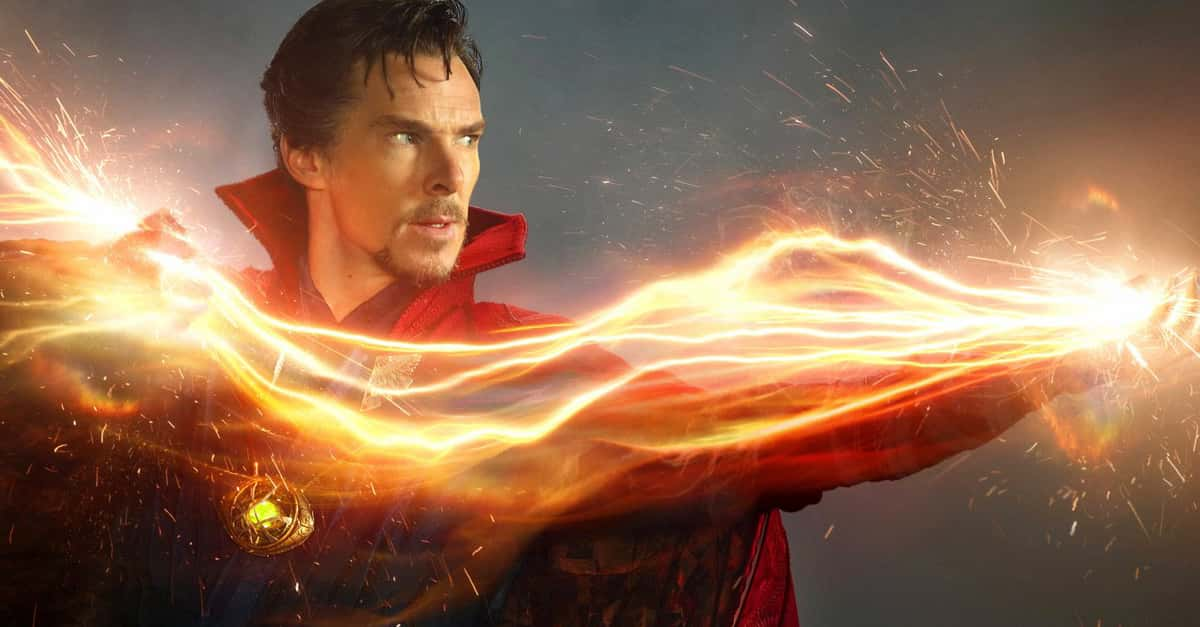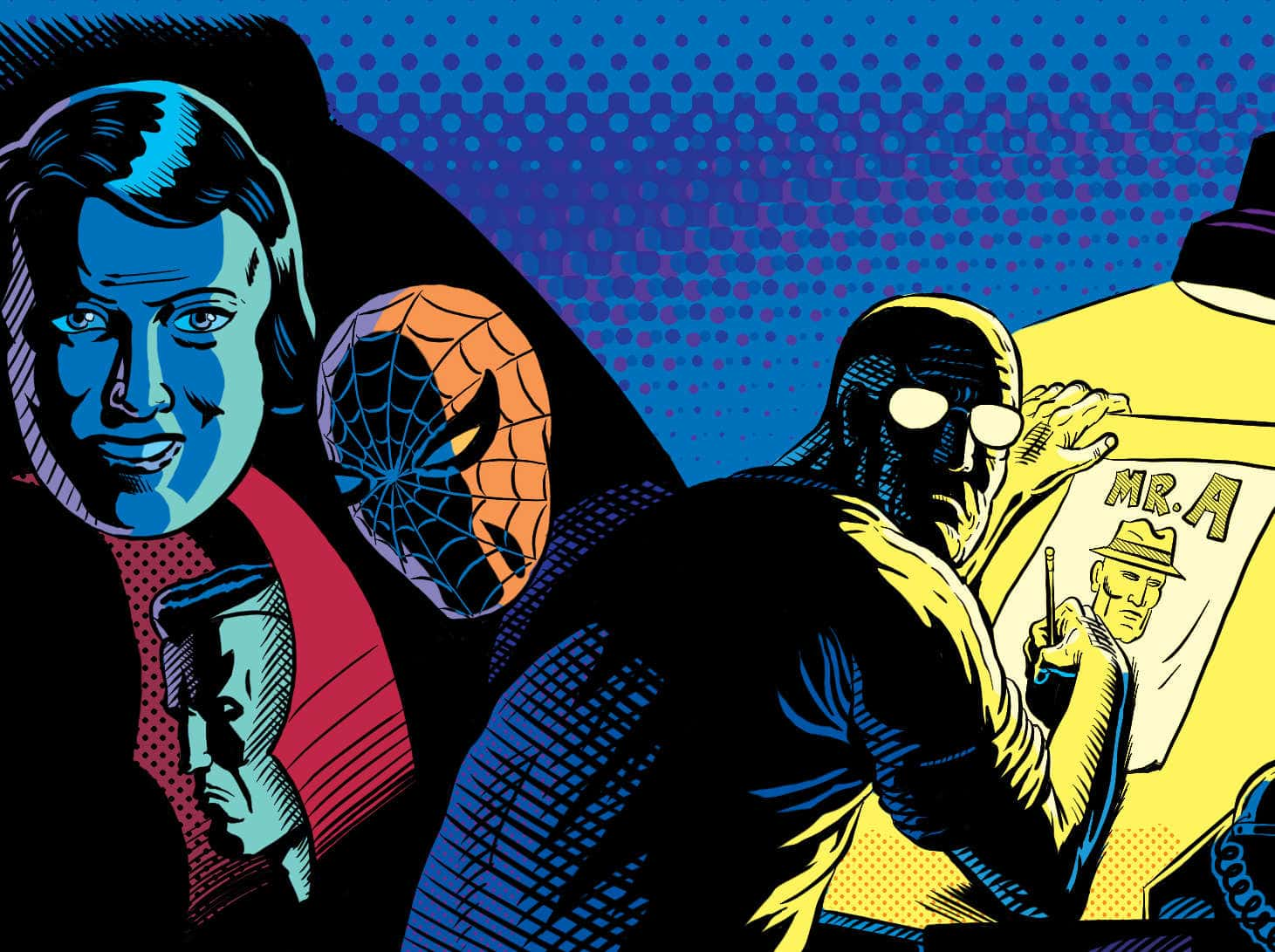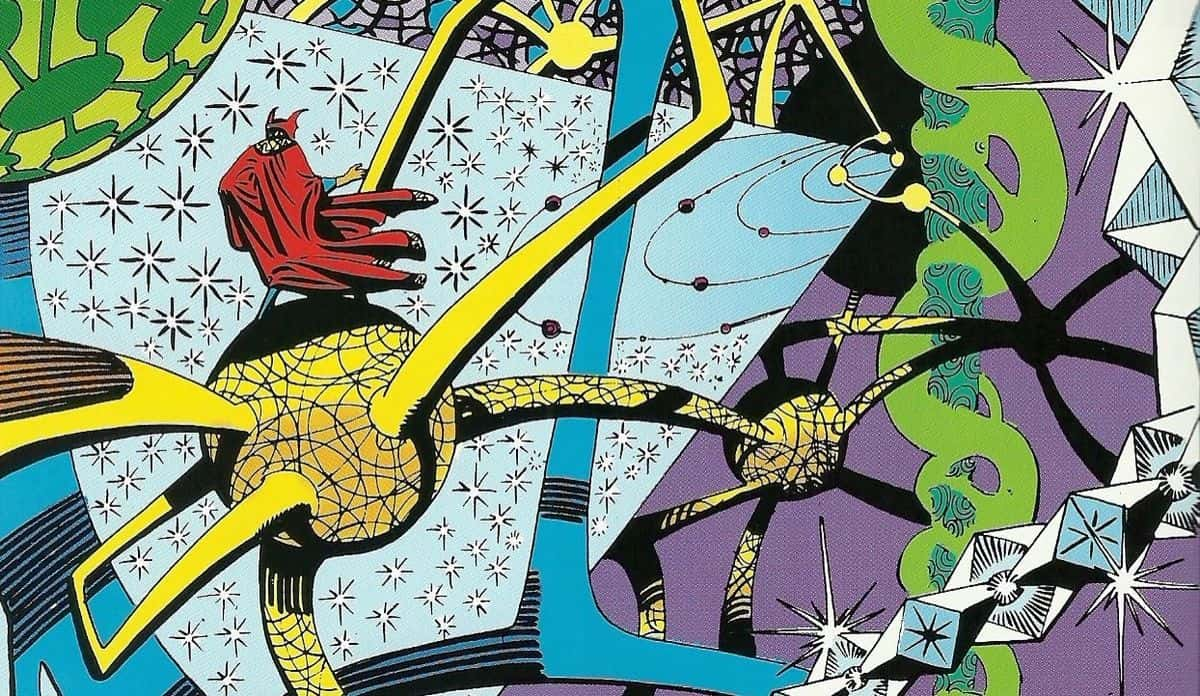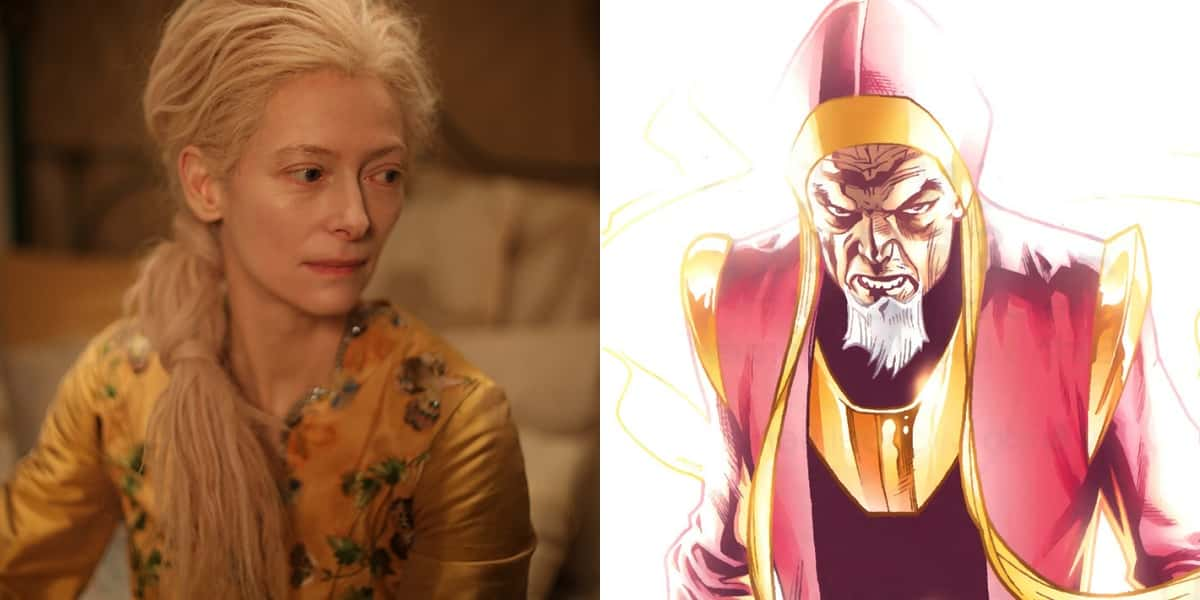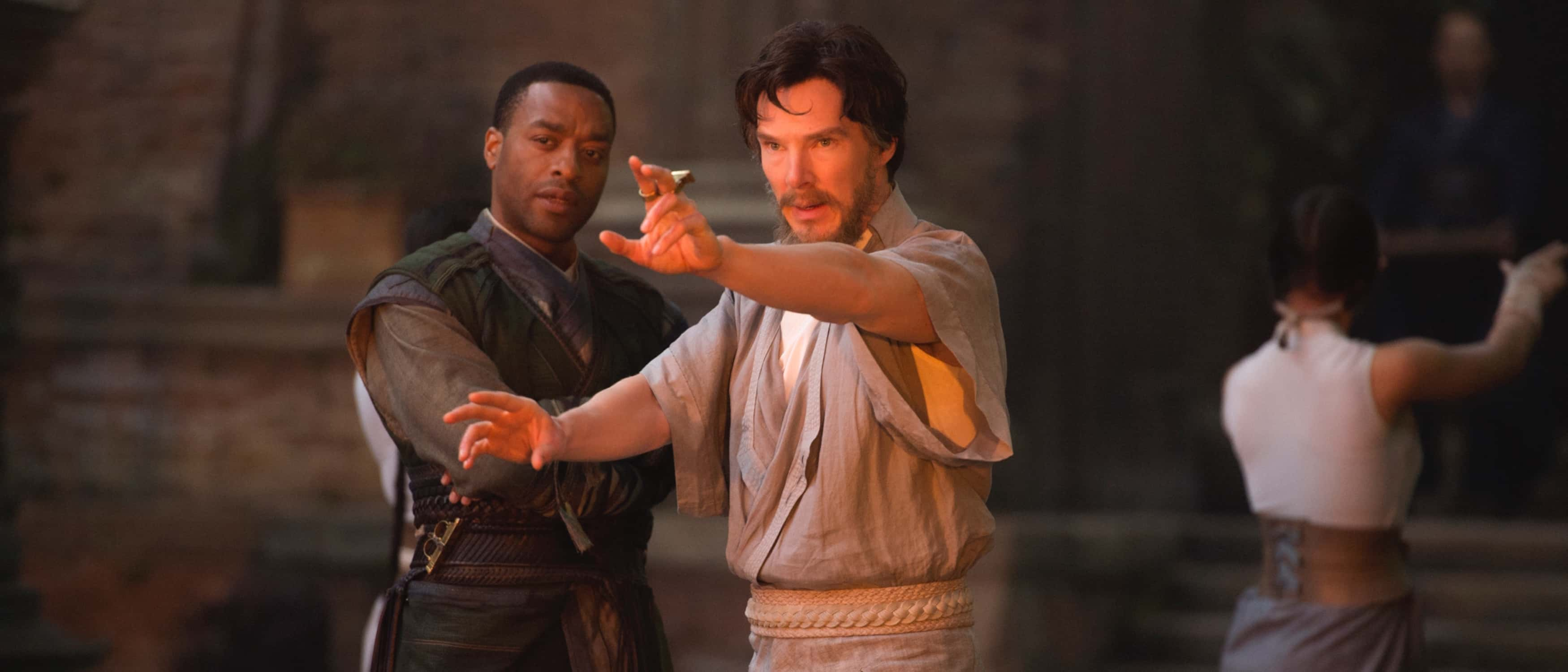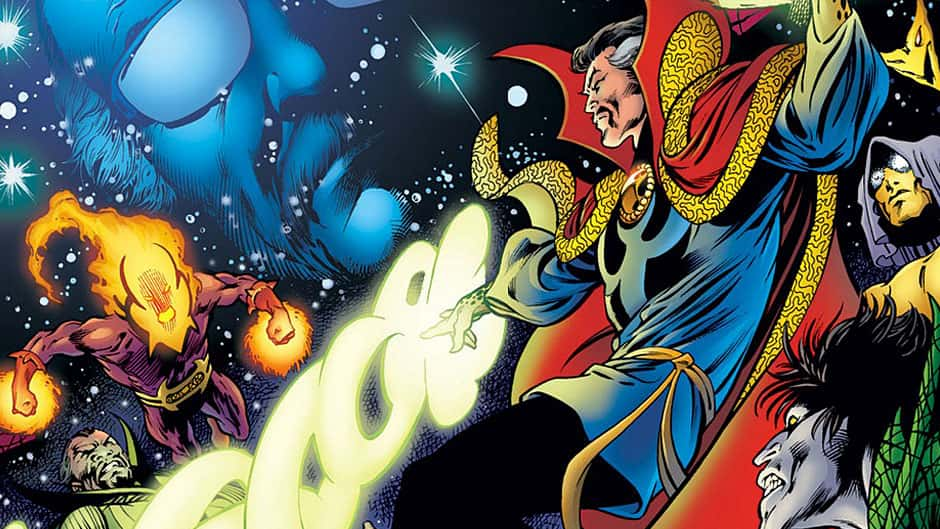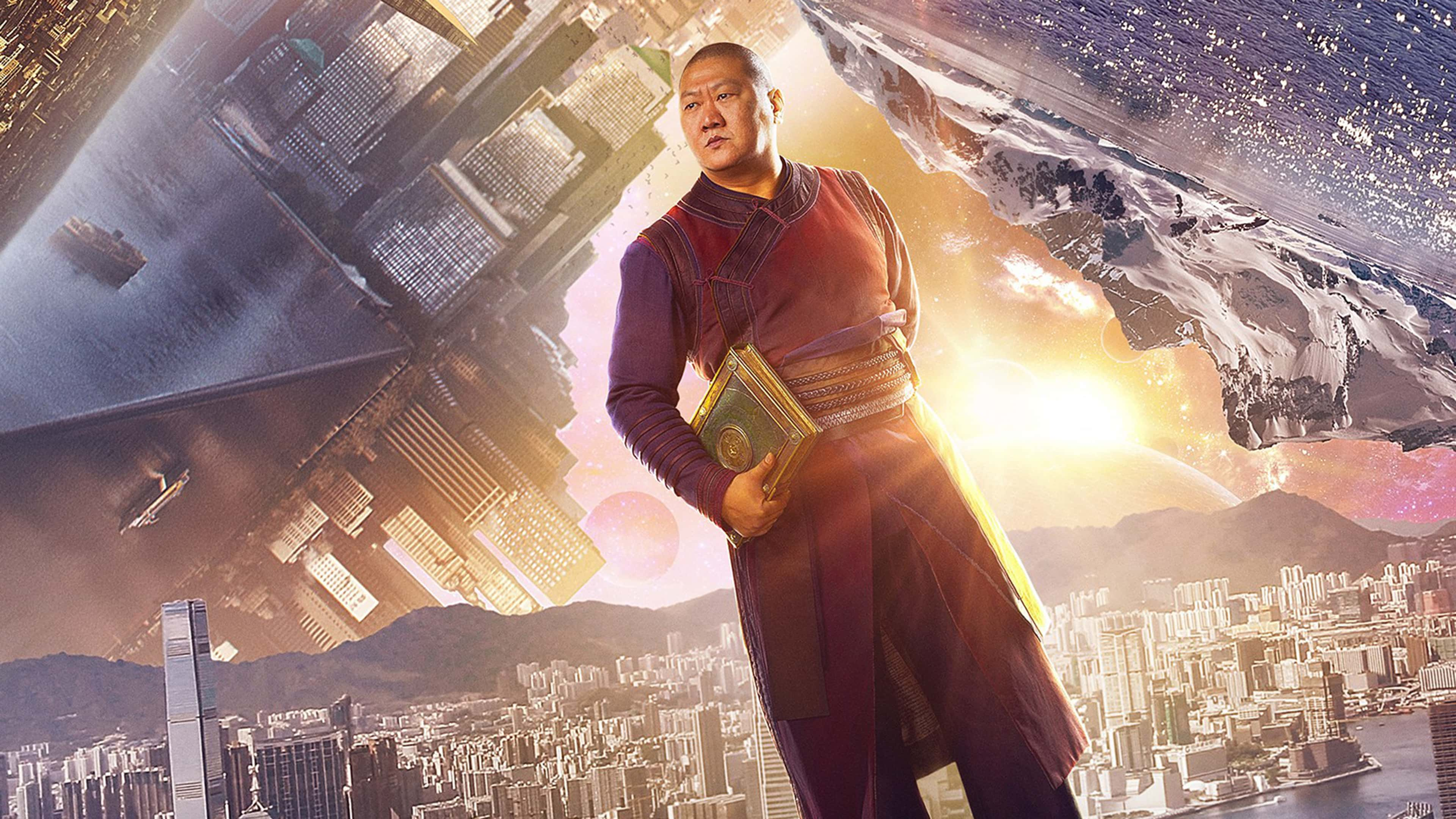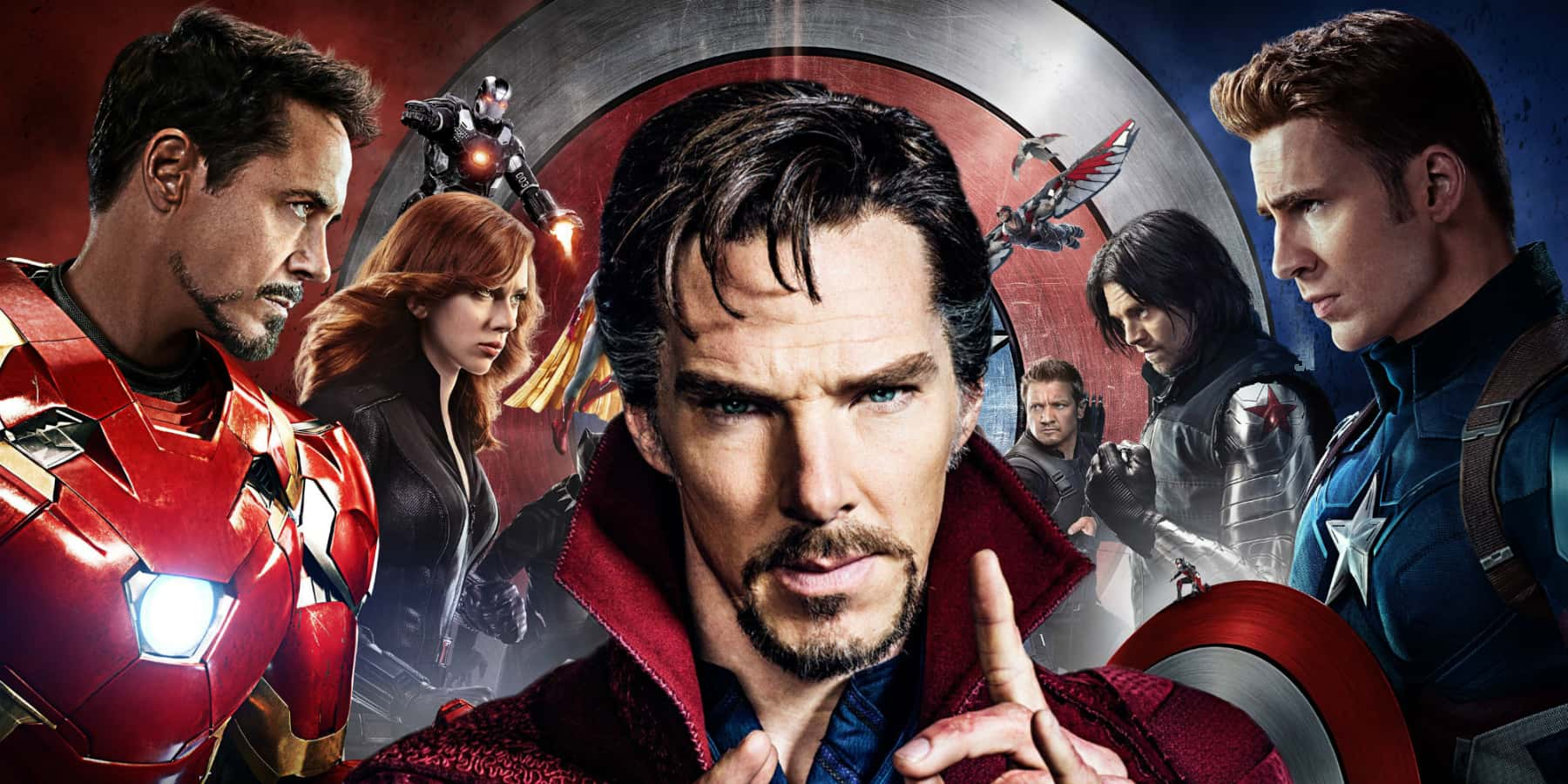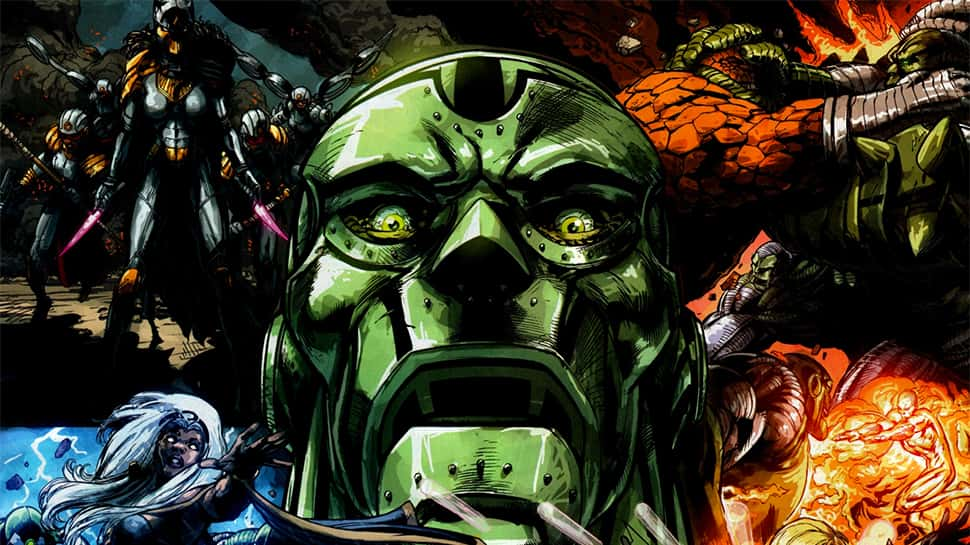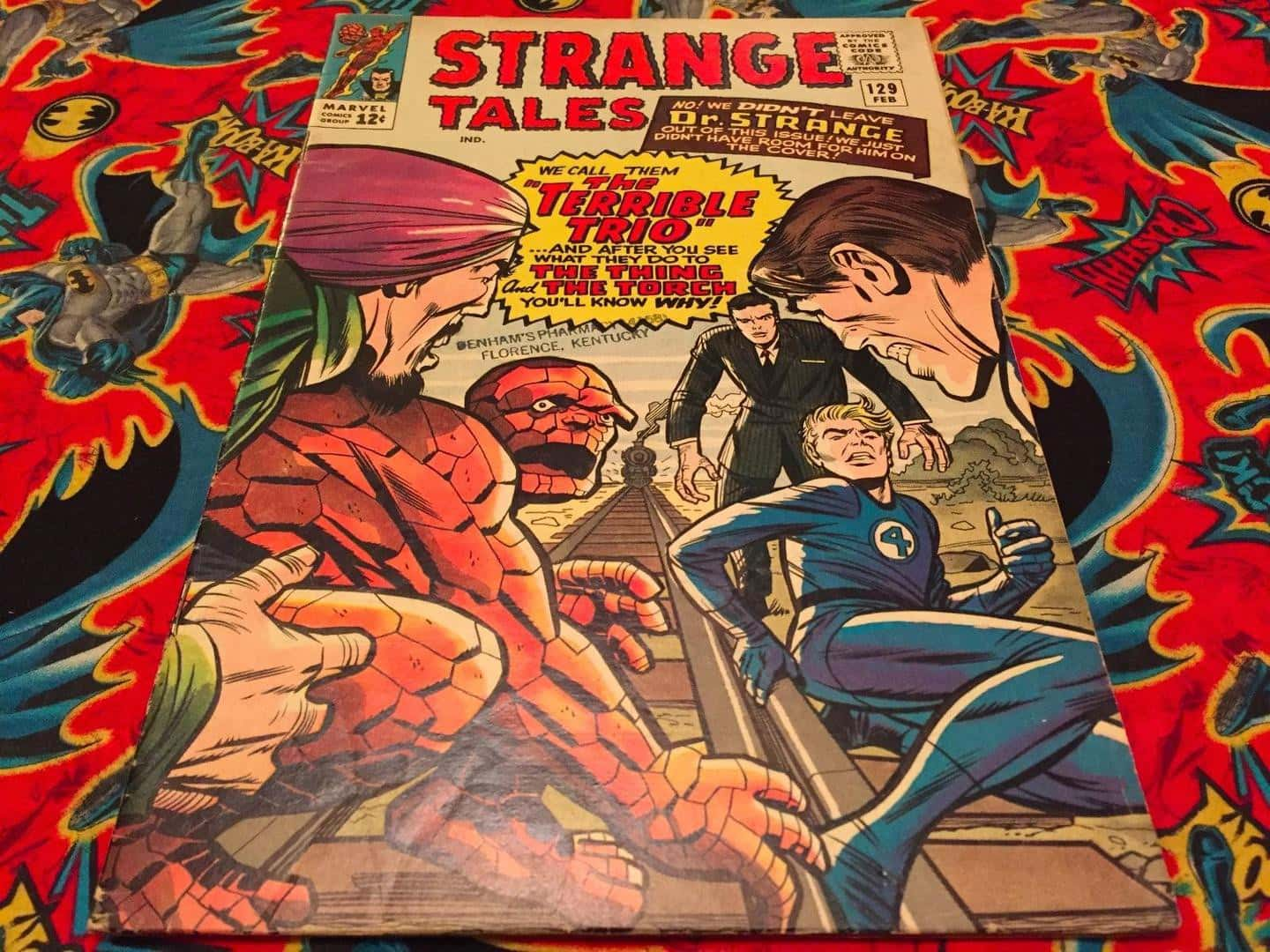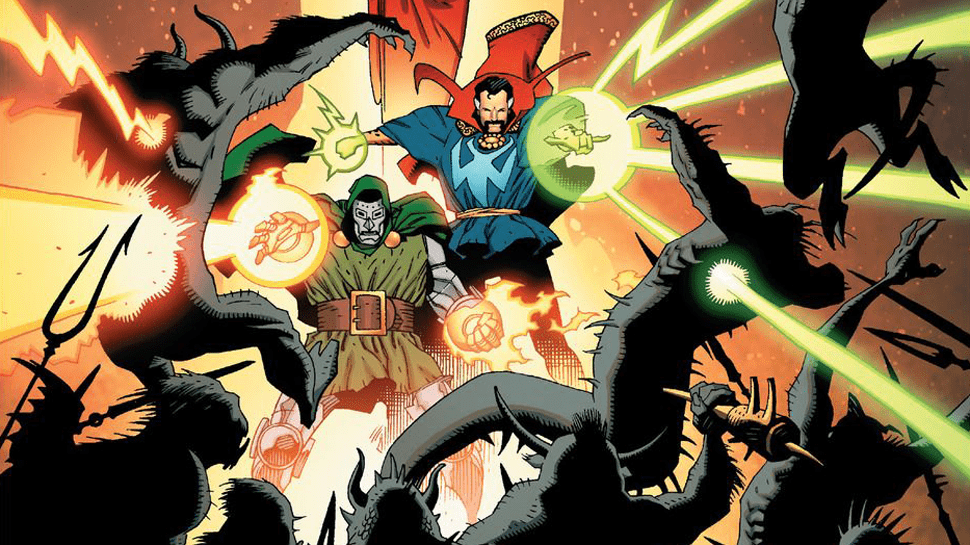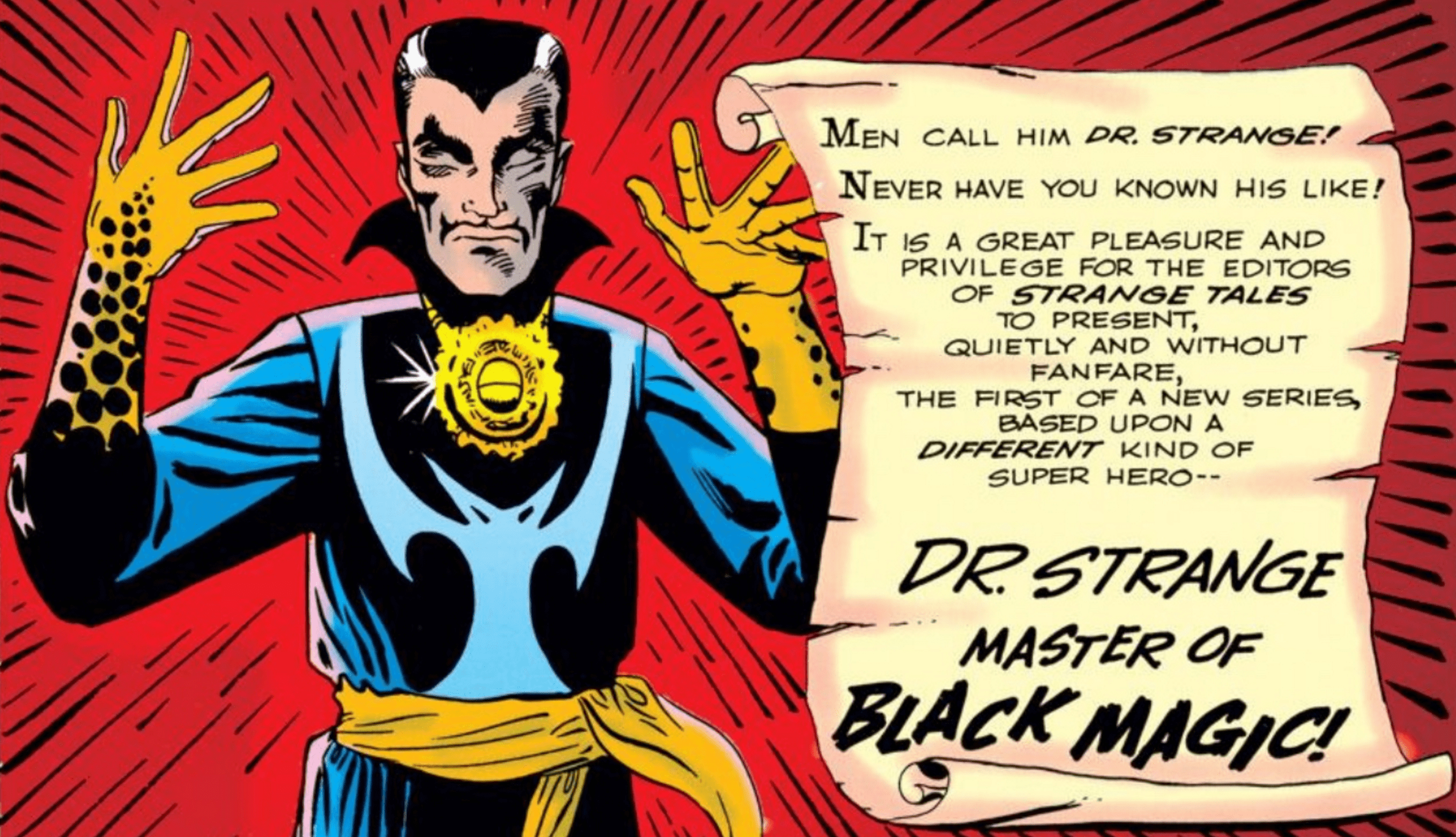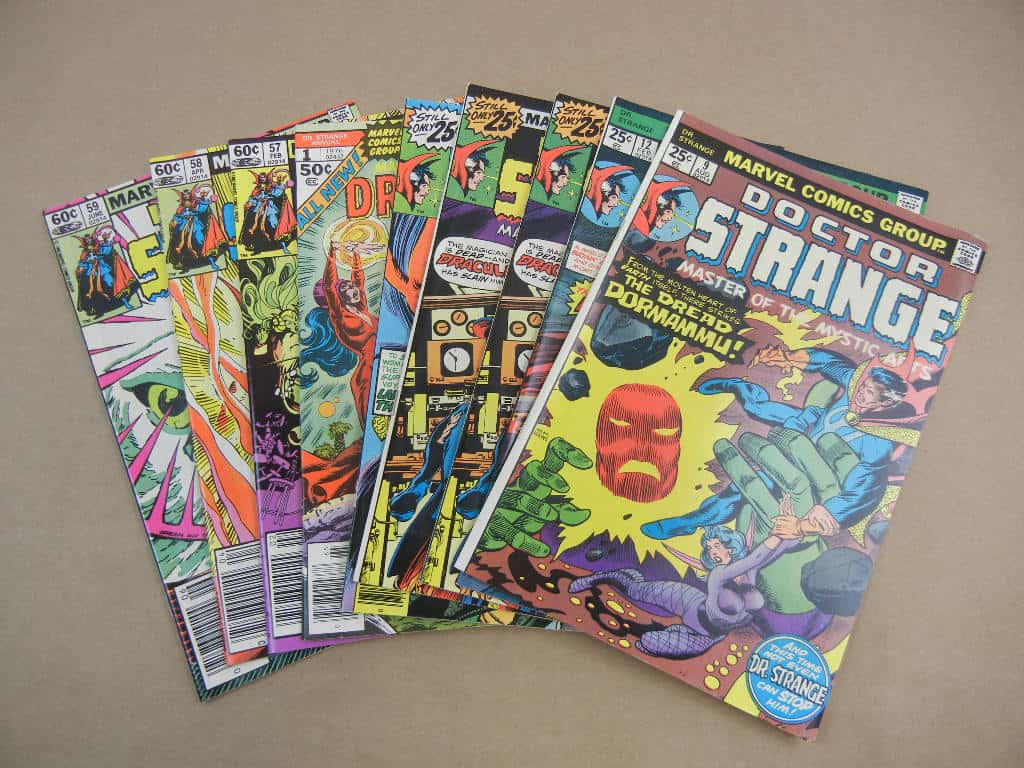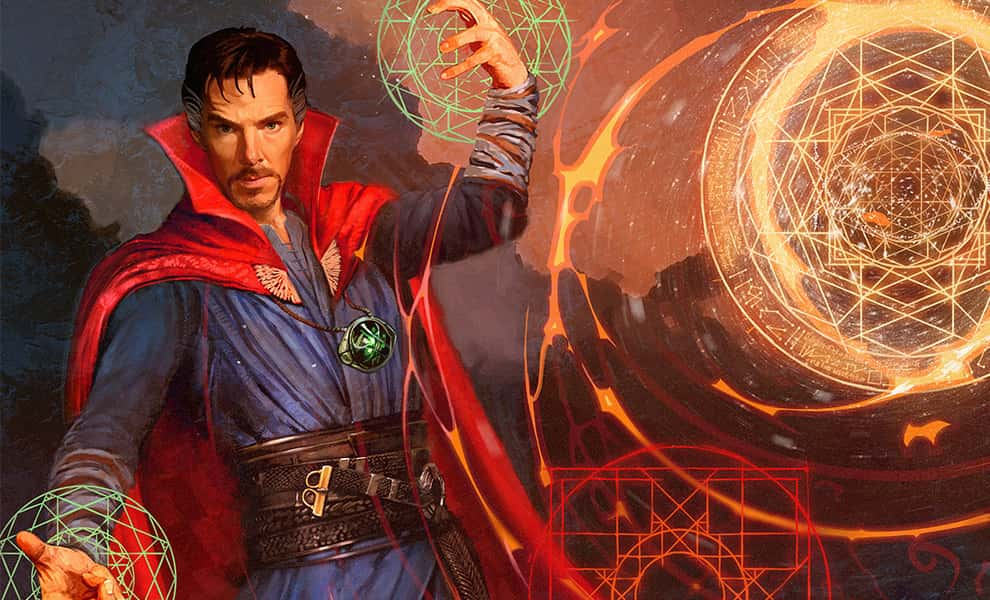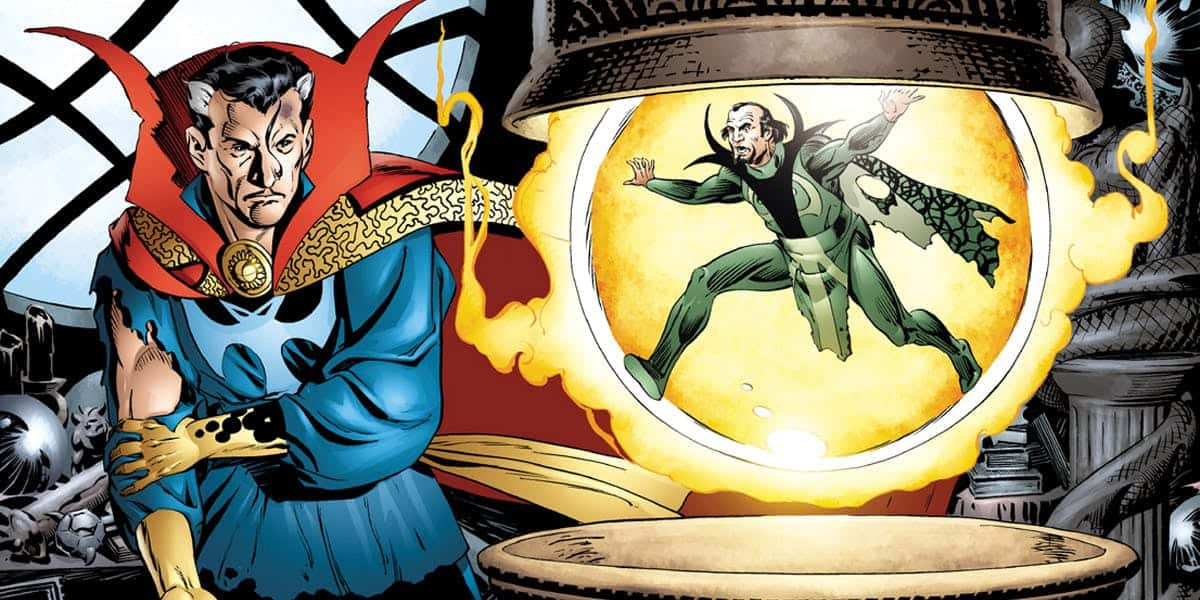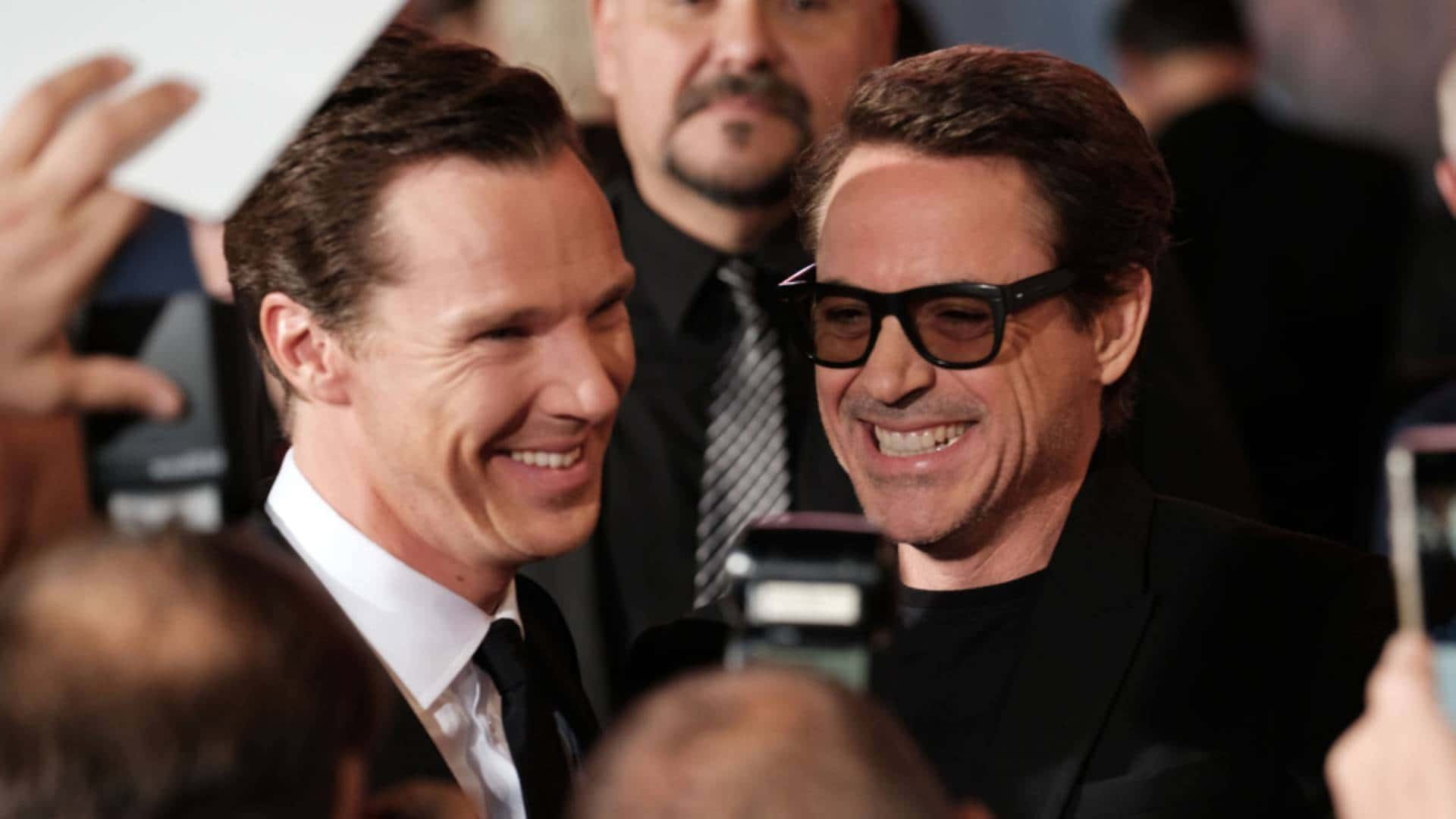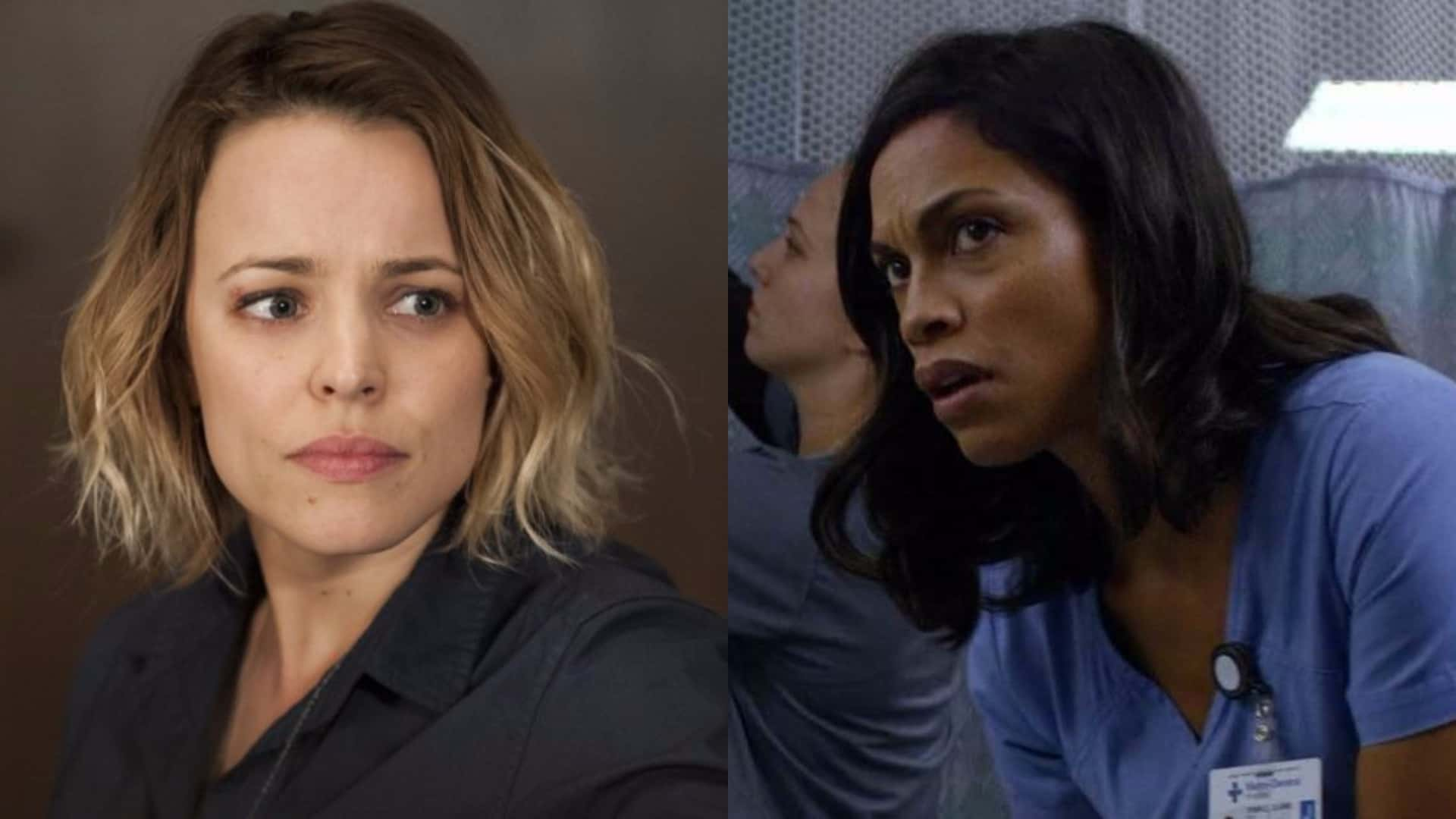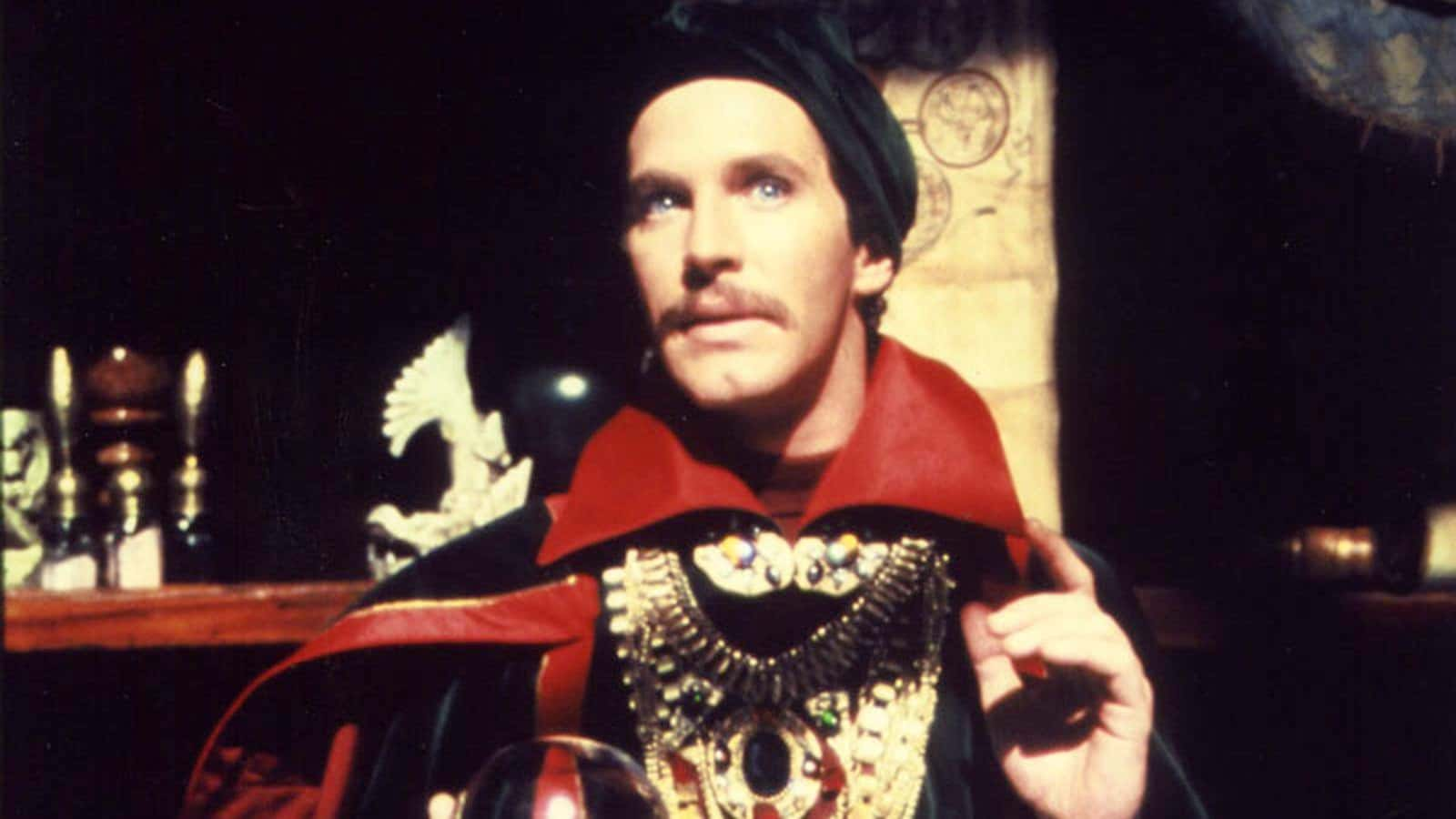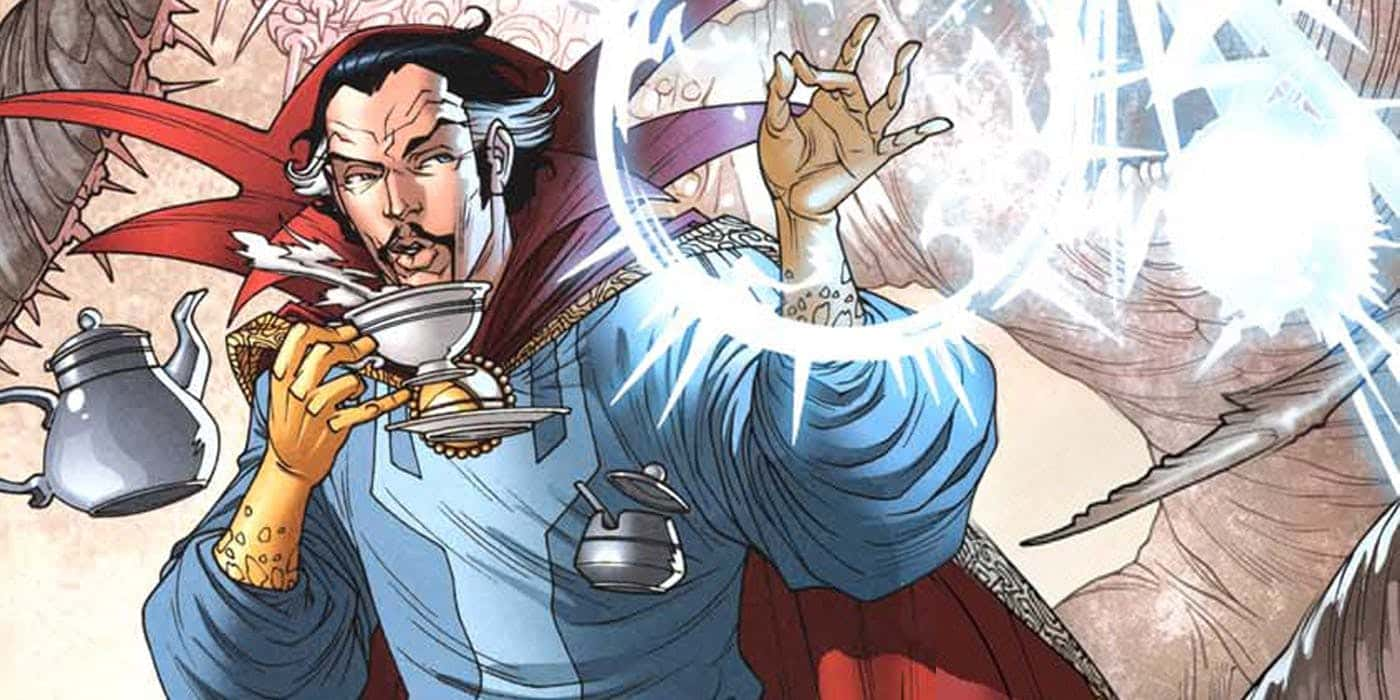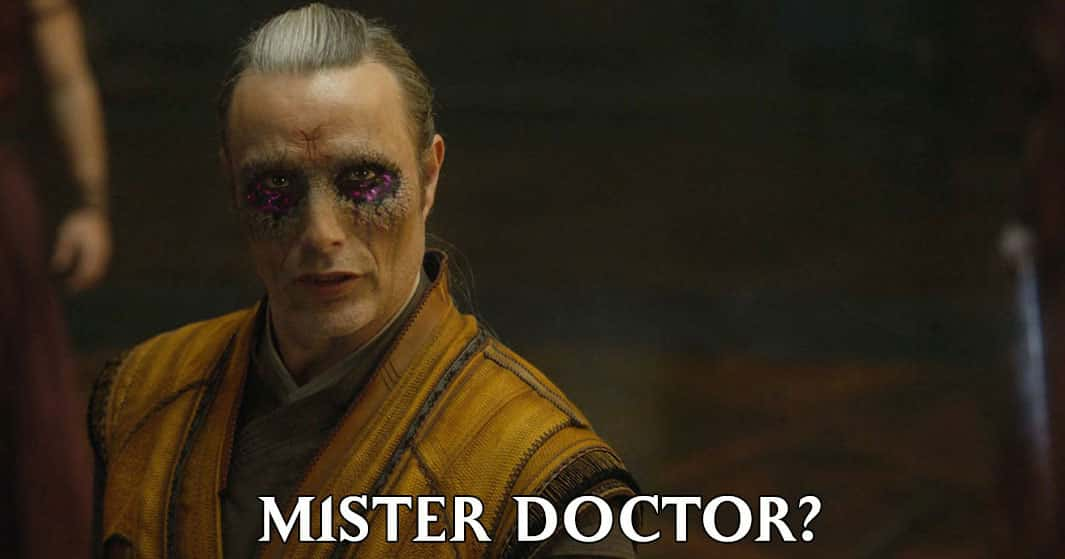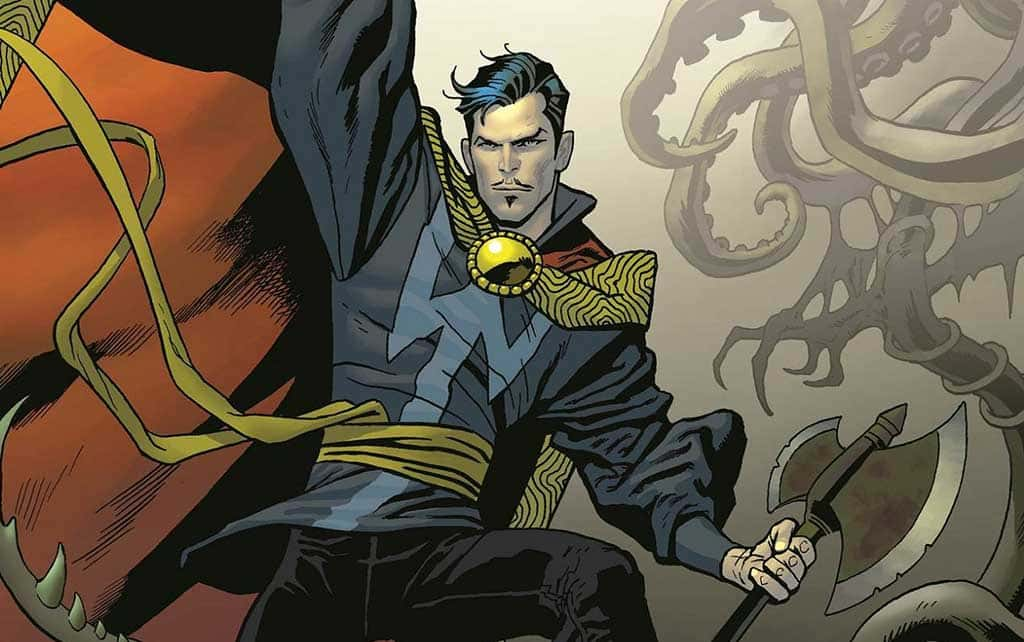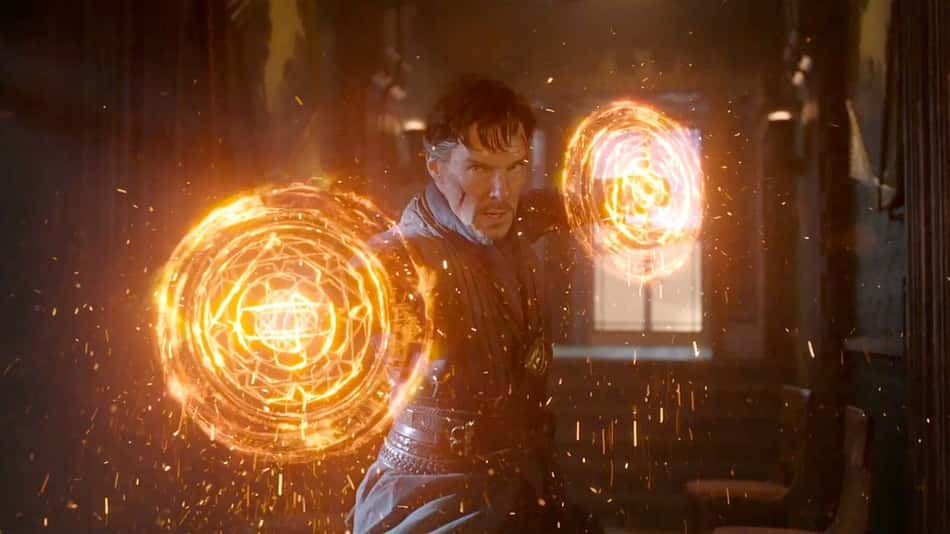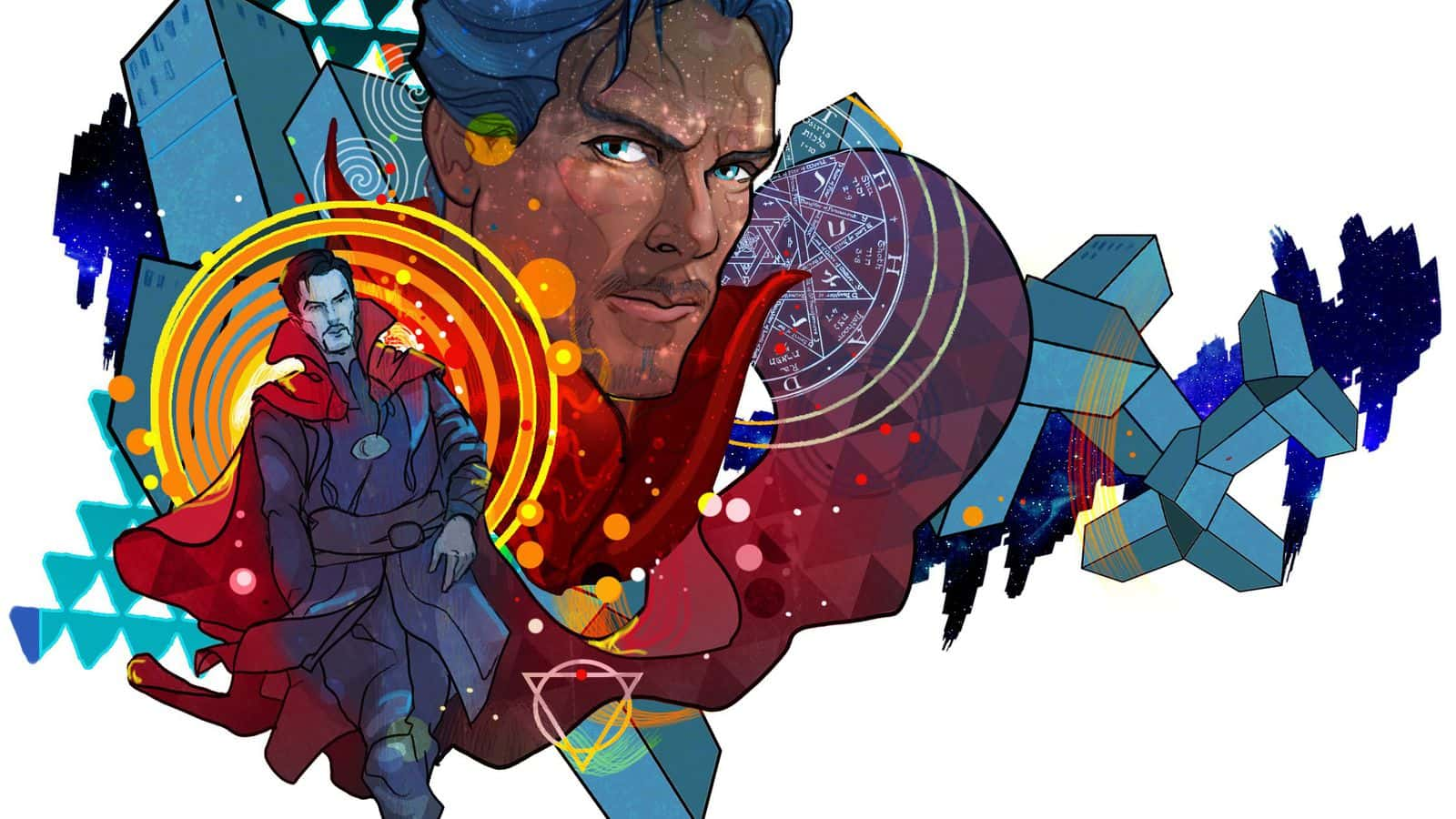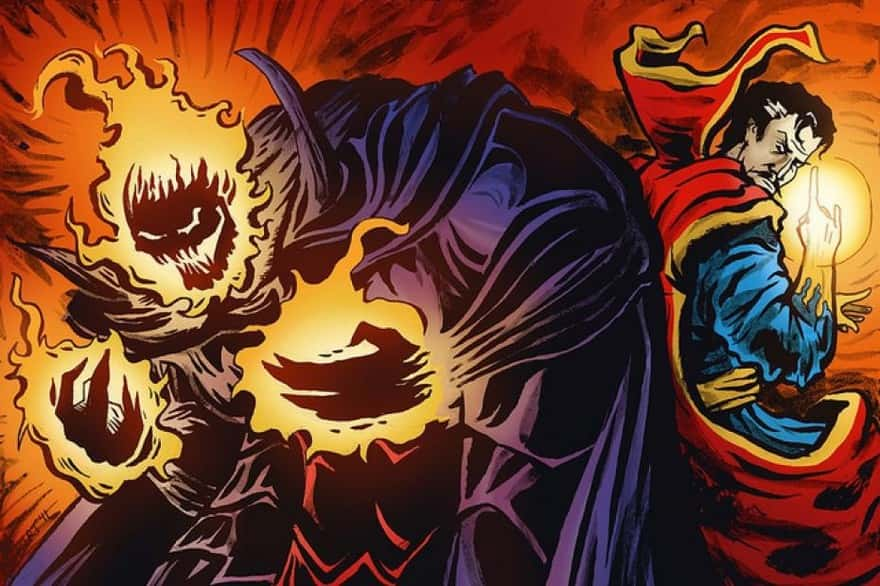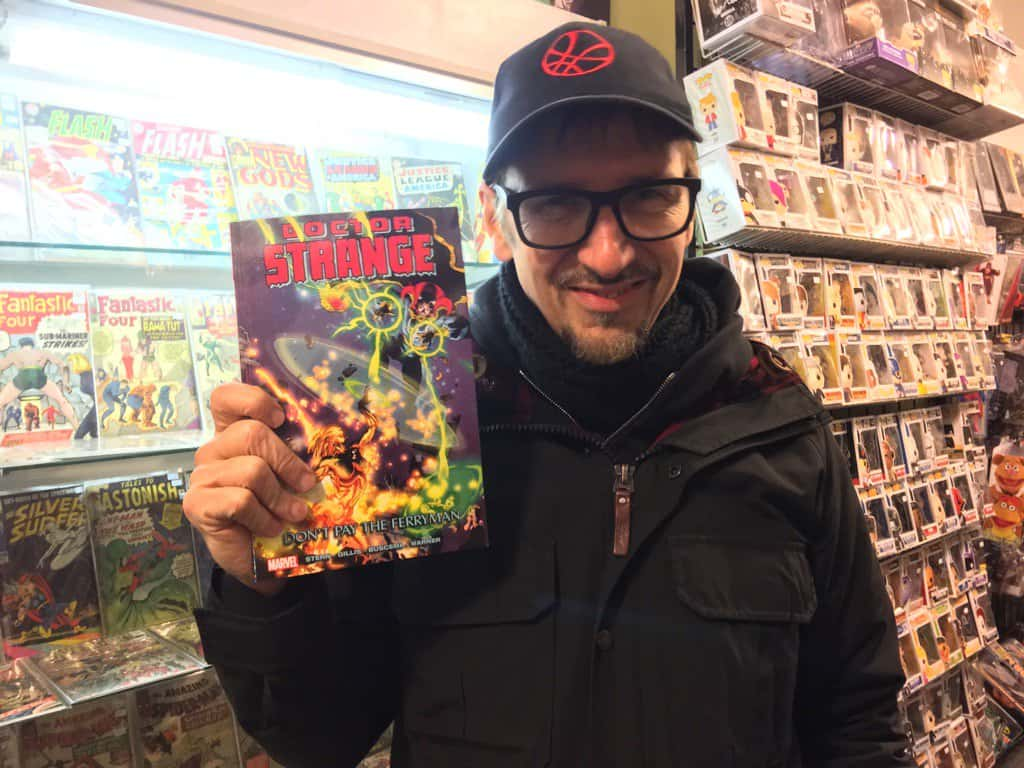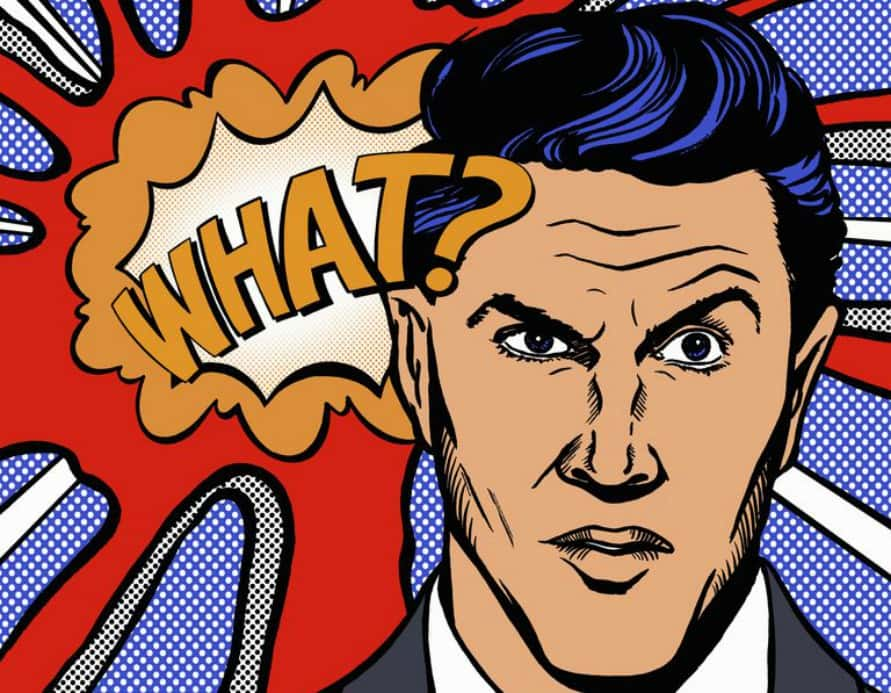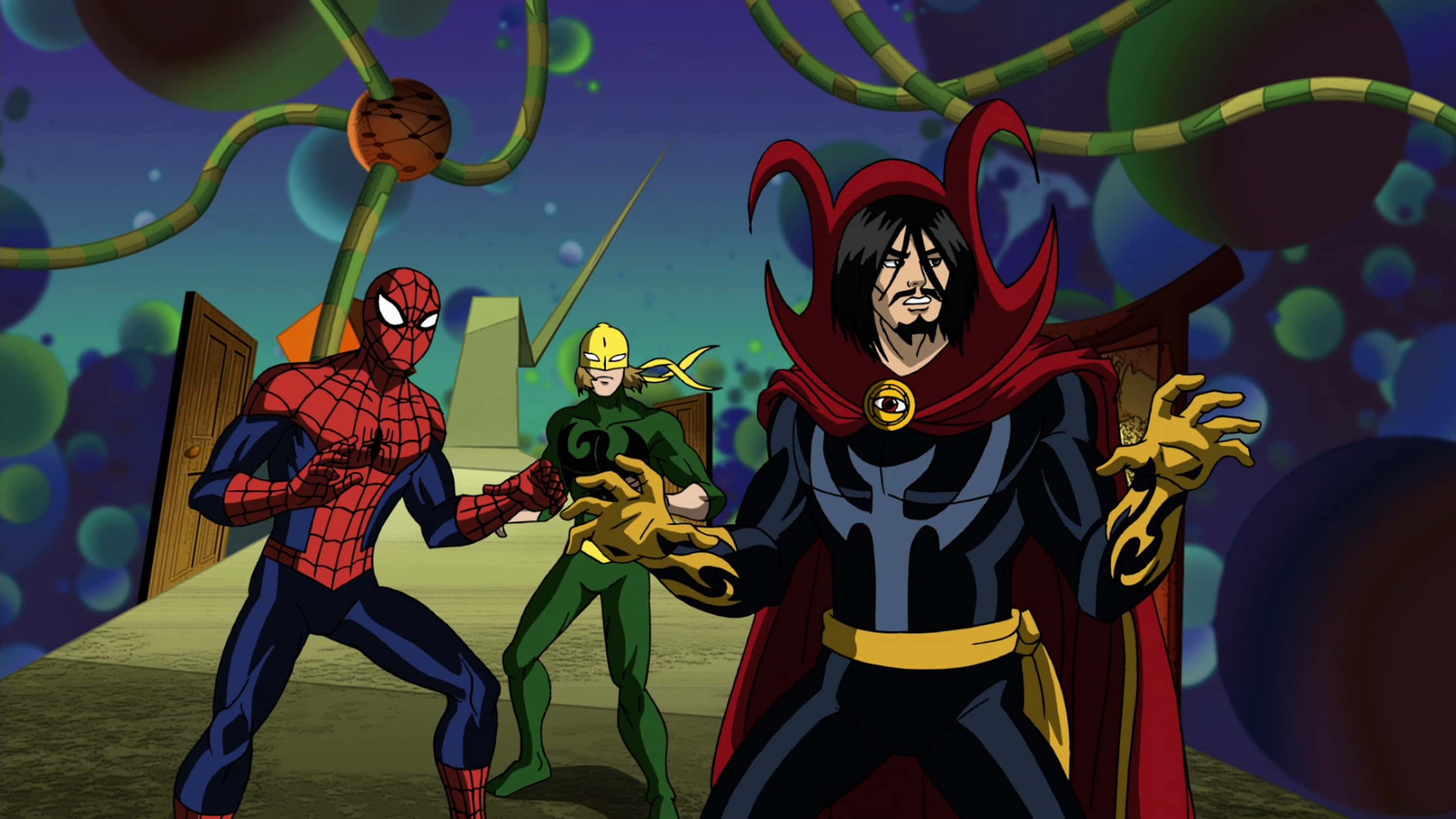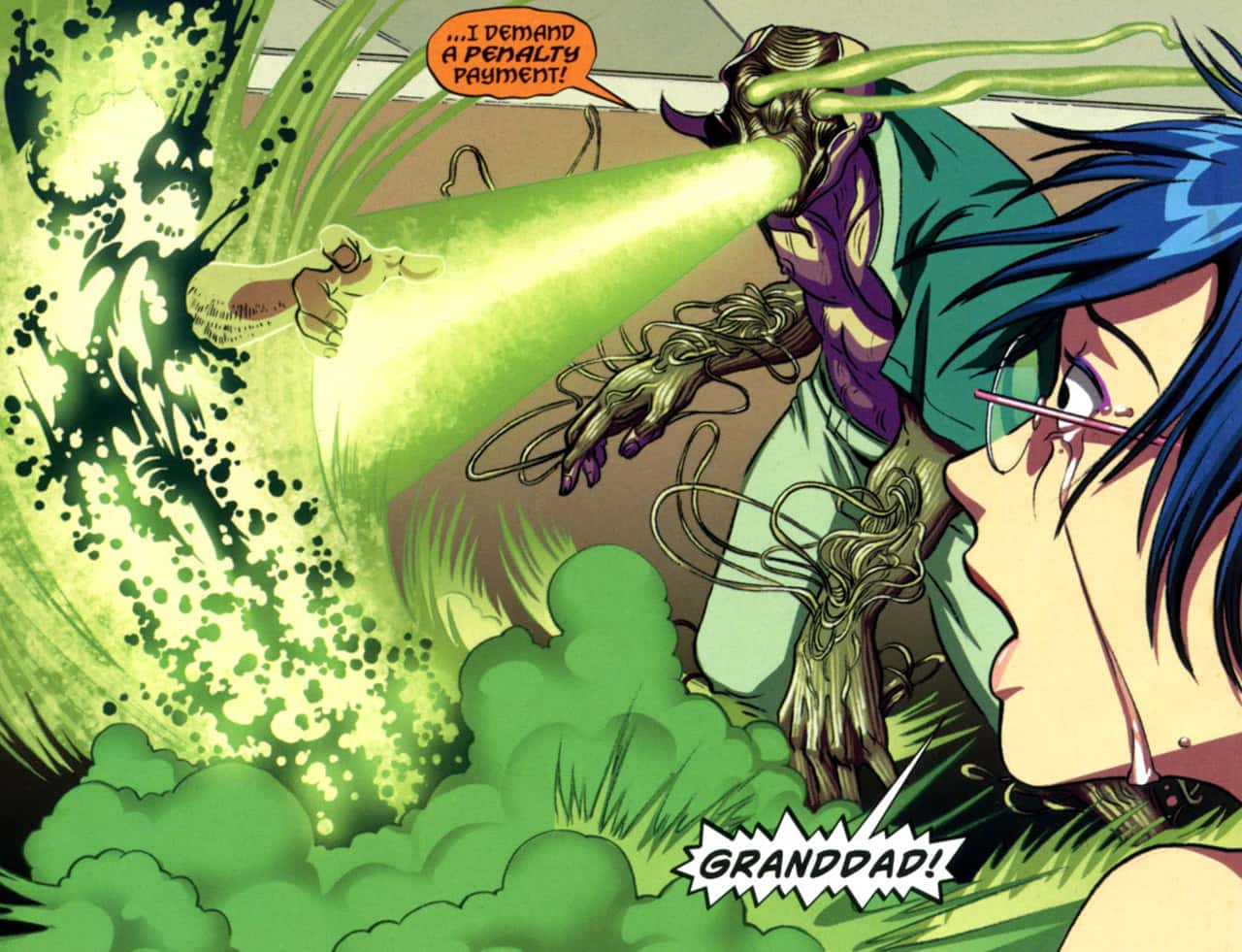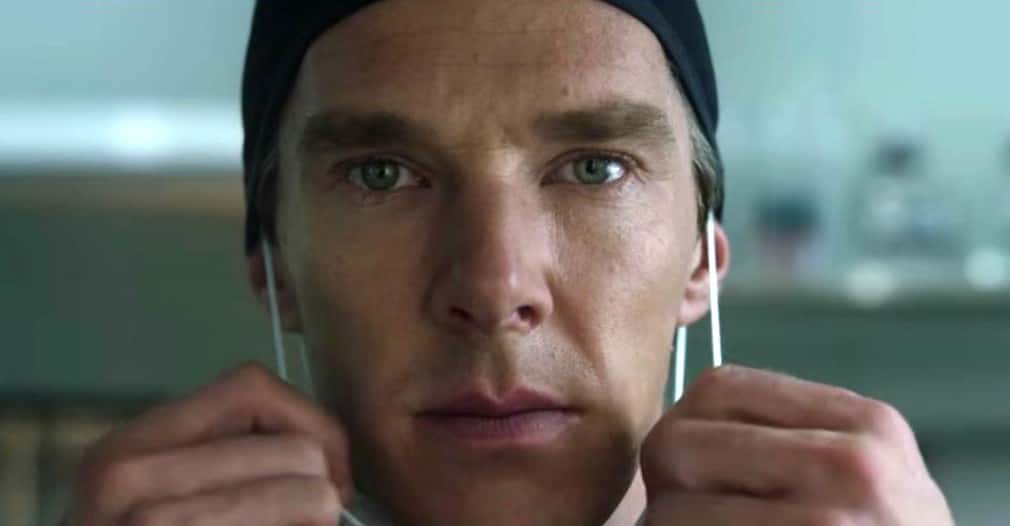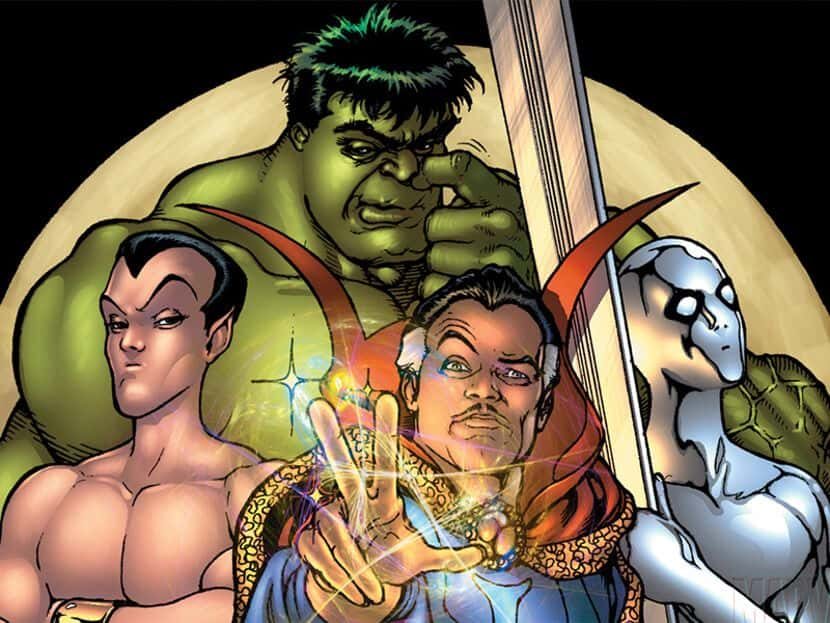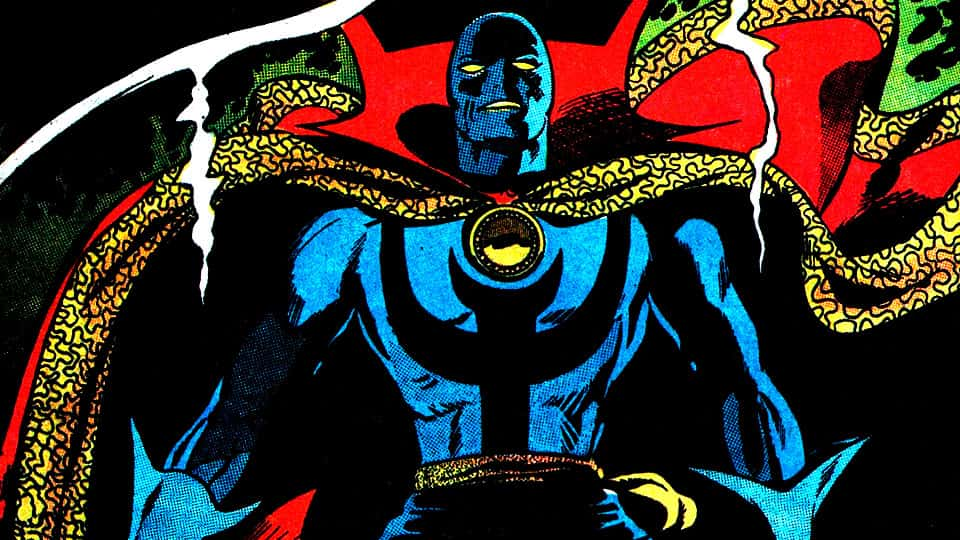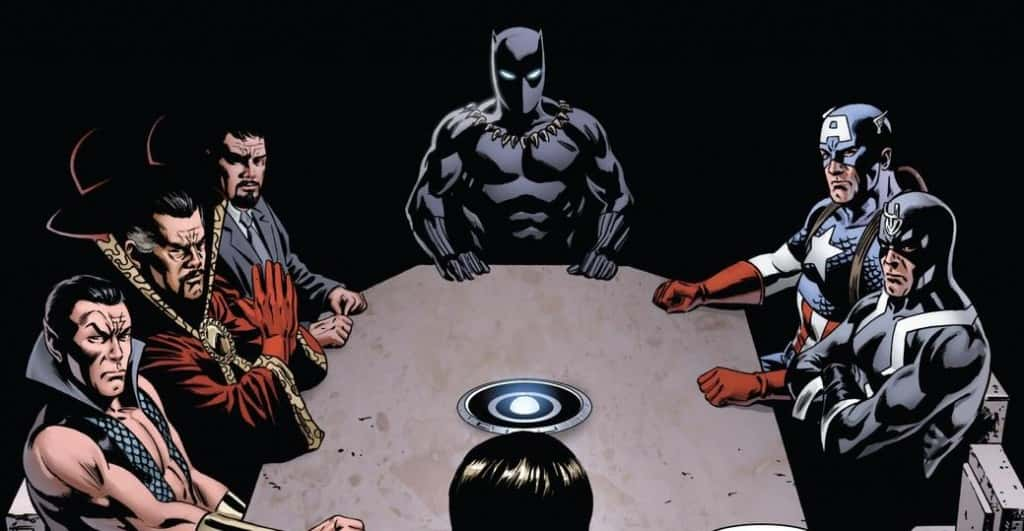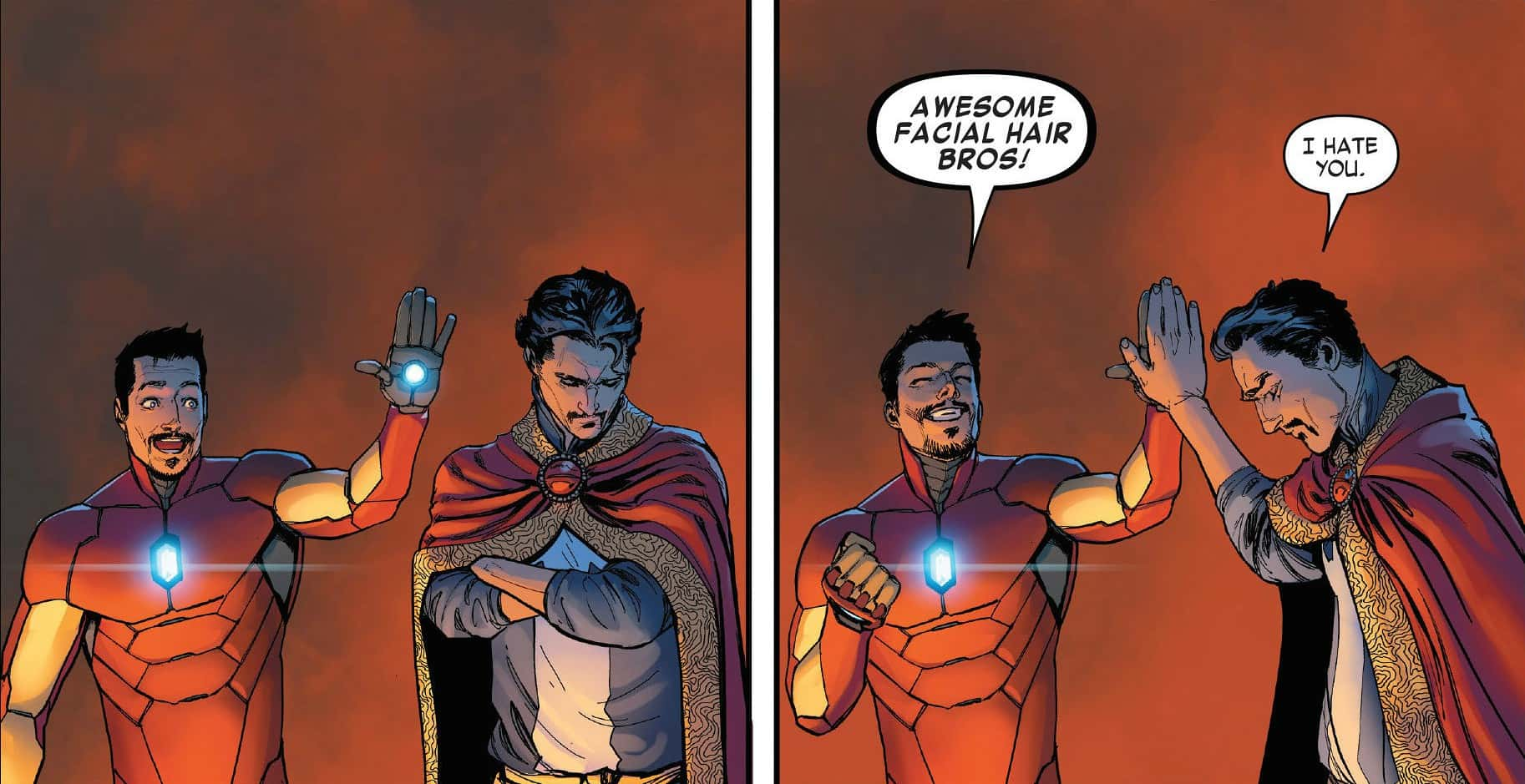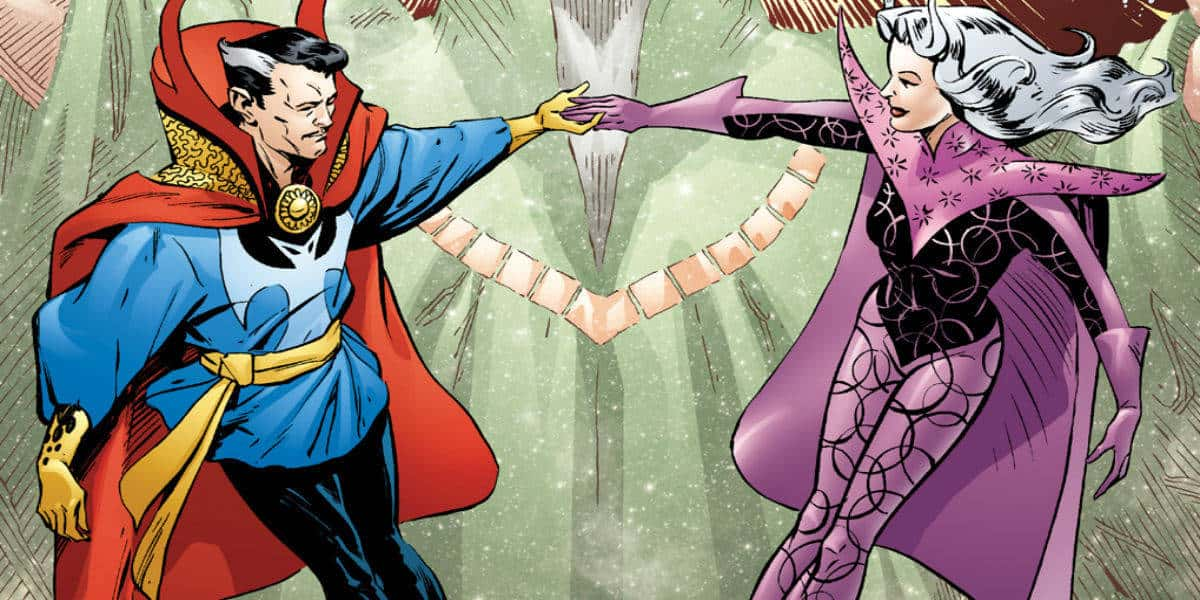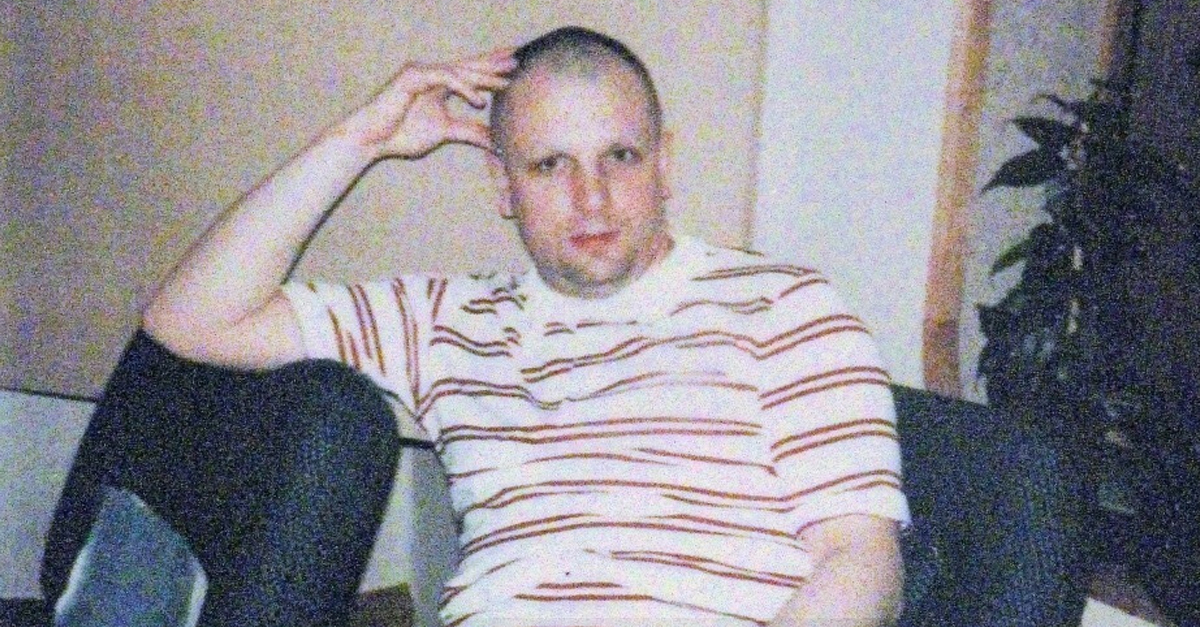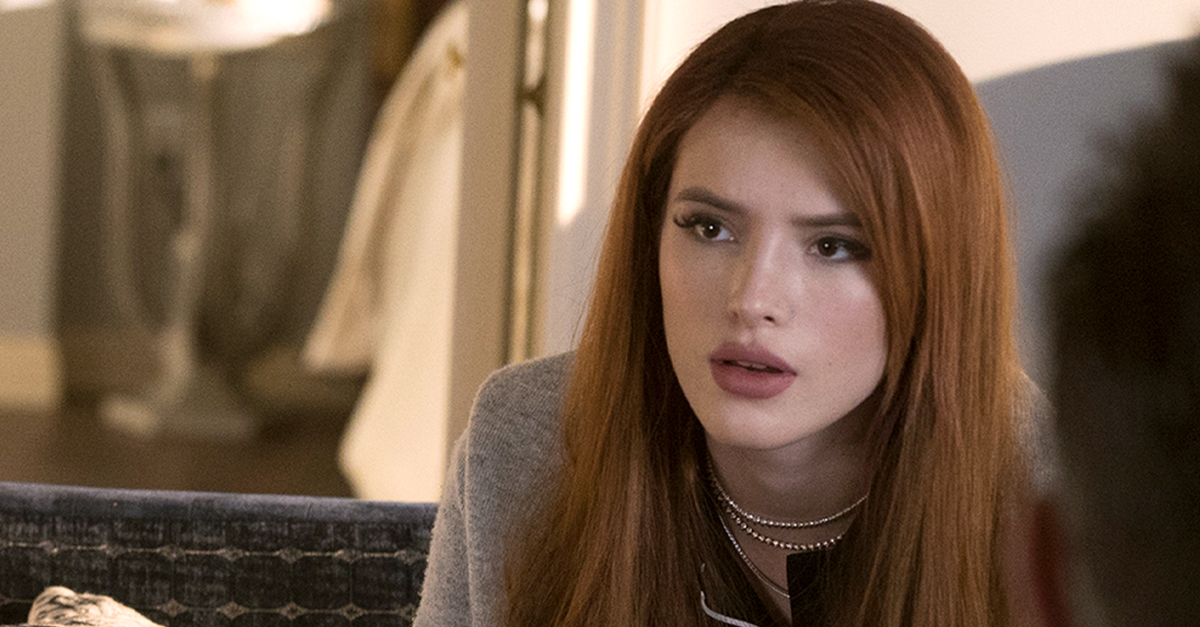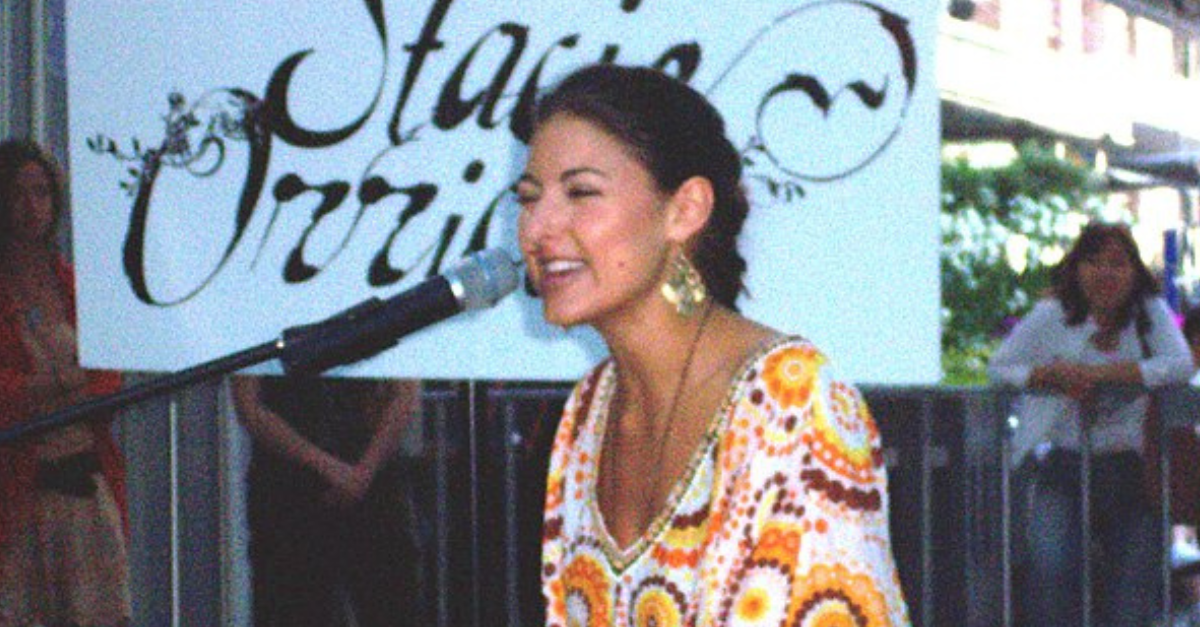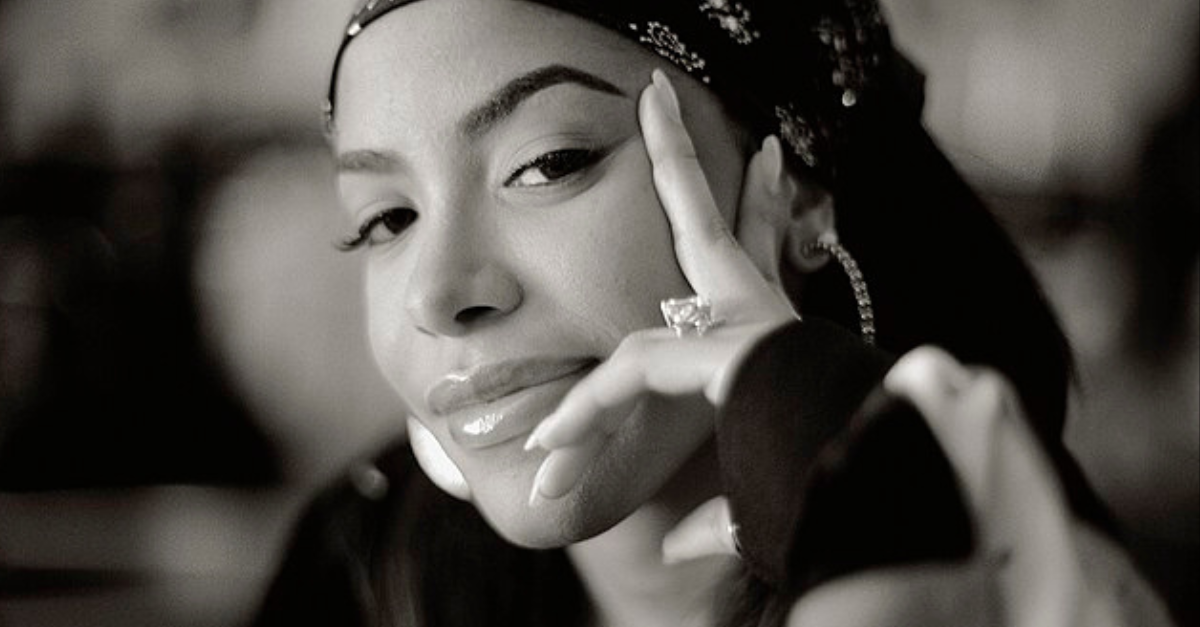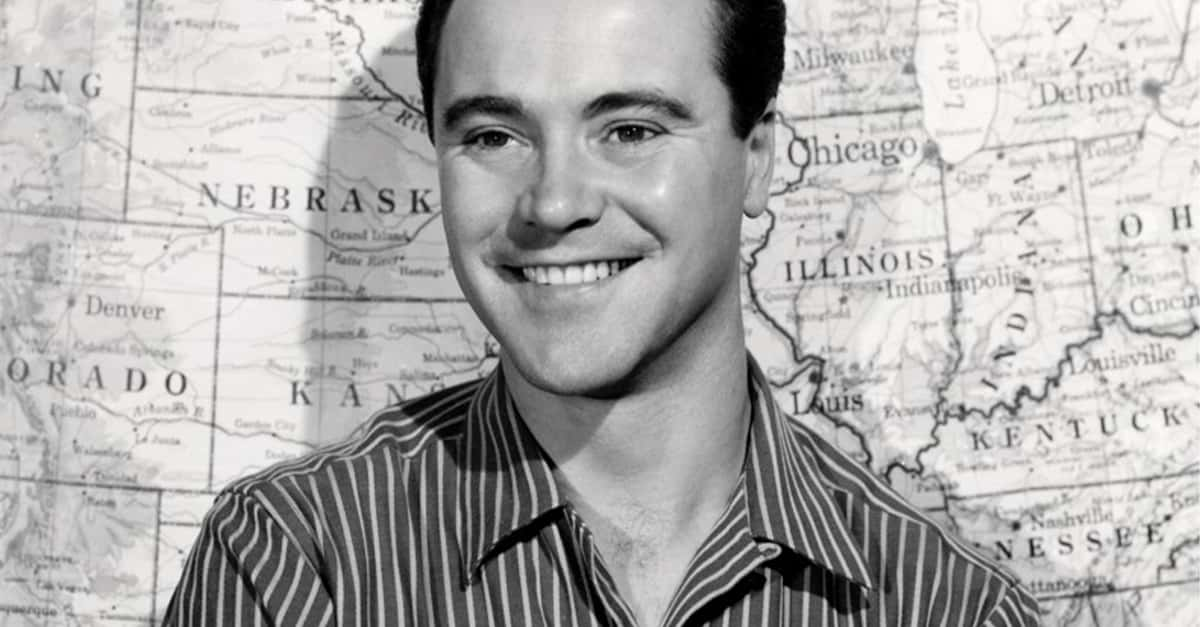Mind-Bending Facts About Doctor Strange
Although he may be best known to the general public from the 2016 film and his subsequent appearance in Avengers: Infinity War, The Sorcerer Supreme has a long history in the comics. After suffering an accident that crippled his hands and then embarking on a journey to cure himself, Stephen Strange transitions from being an arrogant surgeon to one of the most powerful magic users in the Marvel Universe. Eventually, he becomes Doctor Strange, the Sorcerer Supreme. Here are 45 mystical facts about this lesser-known hero who protects the earth from unseen magical threats.
1. Thanks Google
While Doctor Strange can travel to other dimensions and what not, everyone needs a home base. The interdimensional New Yorker has his HQ in Greenwich Village, in a building known as the Sanctum Santorum. If you type that name into Google Maps it actually pulls up 177a Bleecker Street in New York. Some enterprising fans have even left reviews for the business that's there: "I came in for just a headache, the good doctor also cured my demonic possession and gave my aura a facelift. Now that’s service!"
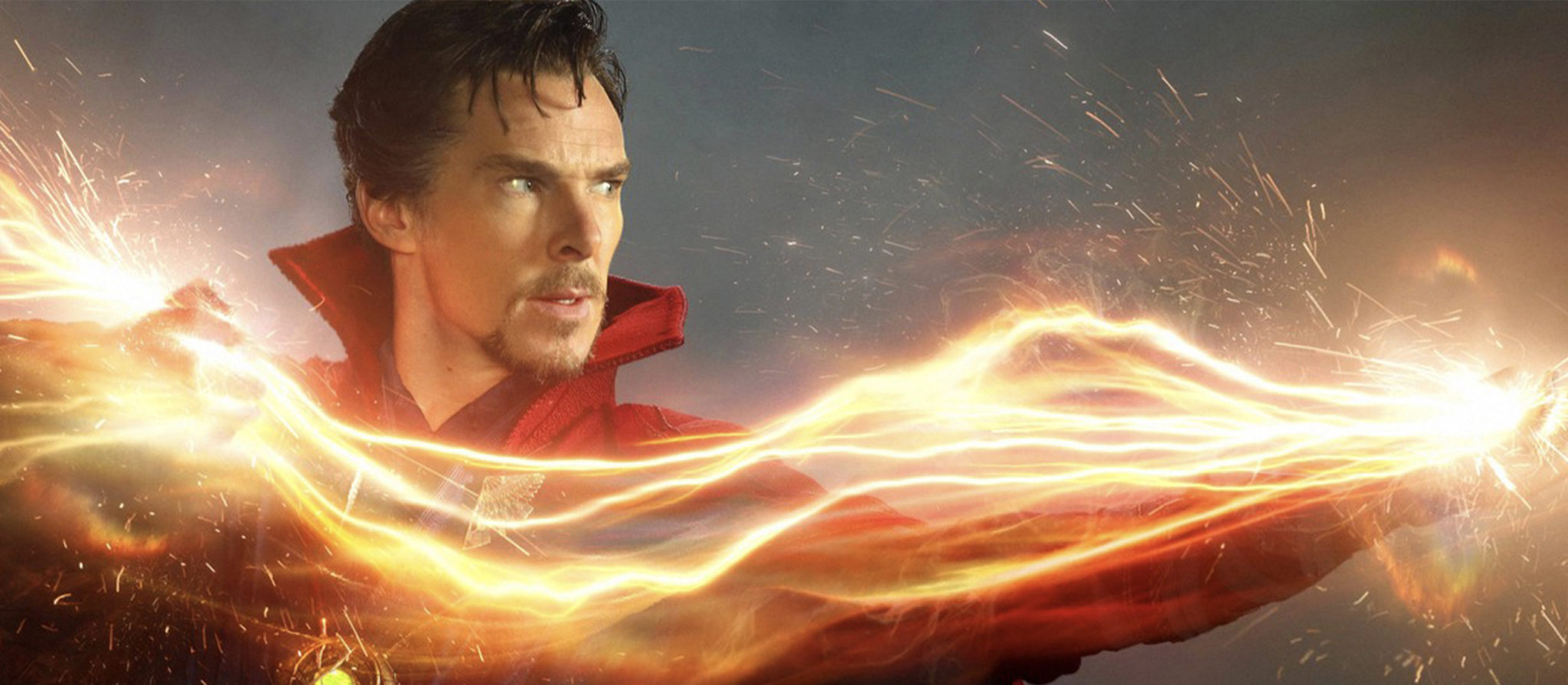
2. The Secret
You might hear a lot of nonsense about the universe giving you everything you need, as long as you believe. Well, for Doctor Strange, the universe actually does bring power. His mystical strength is derived from the energy of the universe, as well as mystical artifacts such as the Cloak of Levitation and the Eye of Agamotto, which are featured prominently in the film.
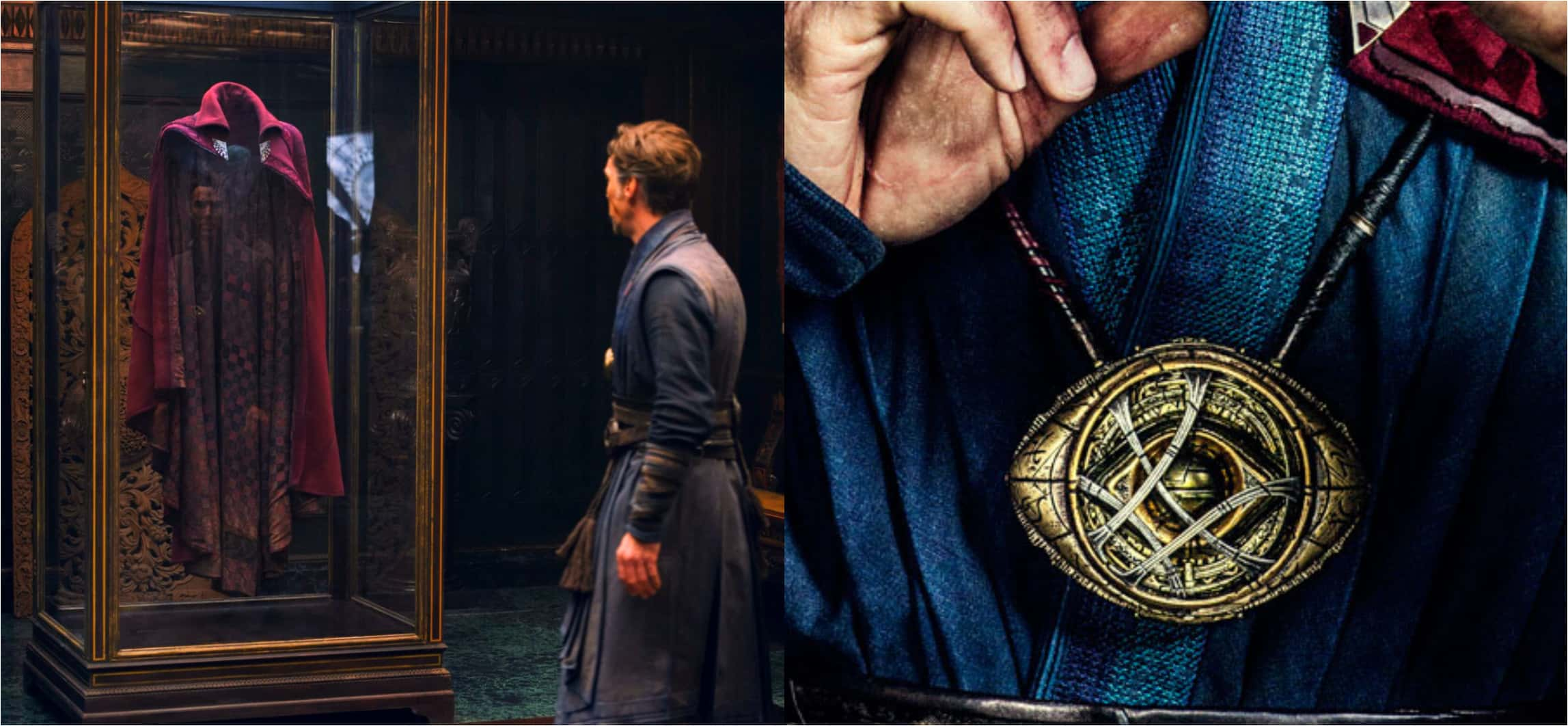
3. Excelsior
Stan Lee is synonymous with Marvel and has a creator credit on most of the label's most popular characters. However, this doesn’t mean Lee always came up with the original concept or pitch. In the case of Doctor Strange, acclaimed artist Steve Ditko created the character, and Lee later helped to further develop the character’s lore and villains. However, Lee’s approach can be described as "hands-off” since he mostly just added in dialogue and narration.
4. Straight Edge Steve
With his travels to other dimensions and battles with otherworldy beings, the early Doctor Strange comic books featured visually arresting artwork thanks to the work of artist Steve Ditko. Since these comics debuted in the 1960s, they of course attracted many readers who engaged in psychedelics. Ironically, the politically conservative Ditko himself refrained from doing psychedelics during this time (allegedly).
5. In the Shadows
Doctor Strange creator Steve Ditko is infamous for rebuffing interview requests, and he continued to do so when interviews were requested during the marketing push for the 2016 film. As a matter of fact, Ditko’s last interview was 1968. However, Ditko’s creative partner, writer Robin Snyder, did say "Yes, we also look forward to the release of Doctor Strange". Good to know!

6. Any Press is…
Tilda Swinton’s character, the Ancient One, is of Tibetan descent in the comics. As a result, casting a white Scottish actress raised some eyebrows. A Marvel Studios spokeperson defended the casting by saying the Ancient One is only a mantle, which can be passed from one person the next. The spokesperson also said the absence of an Asian in the role also avoids stereotyping, since the Ancient One serves as Doctor Strange’s mystical mentor. Writer C. Robert Cargill also added that casting an Asian lead would have been a poor decision since the Ancient One is a "racist stereotype who comes from a region of the world that is in a very weird political place". Genuine or just backtracking? Either way, well played.
7. Everybody was Kung-Fu Fighting
While Doctor Strange may be known for his mystical abilities, he also learned martial arts from the Ancient One. In the comics, Doctor Strange is one of four people ever to evade a strike from the heroine Mantis.
Doctor Strange director Scott Derrickson understood that Doctor Strange’s powers could lend themselves to CGI battles that relied on energy projection instead of hand-to-hand combat. However, Derrickson took influence from martial arts films "because that is the action that I like, for starters…. That is a whole sub-genre within martial arts cinema, the supernatural martial arts cinema…” Sounds like he got the perfect hero to work with then!
8. Reaper
We've all heard the metaphor of facing death, but Doctor Strange did it literally. In Doctor Strange #4 (1974), the sorcerer meets the personification of Death and bests her in battle. Understandably, his fear of death is conquered after the encounter. The battle also bestowed Doctor Strange with the same type of immortality that the elves have in The Lord of the Rings. While he can die in combat, he can’t die by aging.
9. Consolation
While Doctor Strange got backlash for its casting of the Ancient One, it seems the film did right by one of the source material’s Asian characters. Wong, played by Benedict Wong, is portrayed as the keeper of the Kamar-Taj’s library and sometimes plays a mentor to Doctor Strange. In the comics, Wong is just Stephen Strange's manservant. Ya, I think everyone is glad that character got a bit of an upgrade.
10. The Switzerland of Superheroes
During the comics' Civil War storyline, Doctor Strange personally opposed registration but did not involve himself in the conflict. Instead, he secluded himself in the Arctic while events played out between Captain America’s anti-registration side and iron Man’s pro-registration side.
11. The Two Doctors
One of the most beloved Doctor Strange comics actually centers around another doctor—Doctor Doom. Doctor Strange helps Doctor Doom travel to the fiery underworld to save Doom's mother's soul. Road trip!
12. Freedom of the Press
Like his creator, Doctor Strange is a little shy with the press. In Strange Tales #129, the Sorcerer Supreme declines to do a TV interview; as a poorly thought out alternative, he lets the reporters play with a powerful artifact on TV. Predictably, they activate its power accidentally and get sucked into another dimension. Strange saves them and wipes their memory, but it seems like he did things the hard way that time.
13. Show Me Your Badge
Aside from helping save Doctor Doom’s soul, Doctor Strange actually served as Doom’s right-hand man at one point. The Secret Wars storyline saw the two doctors work together to try to save the multiverse. During this time, Doctor Strange preferred to call himself "Sheriff Strange". I like the sound of that.
14. Aptly Named
Doctor Strange’s first comic book appearance was in 1963's Strange Tales #110. The good Doctor didn’t get top billing though, being relegated to just a five page story—the third story featured in the issue.
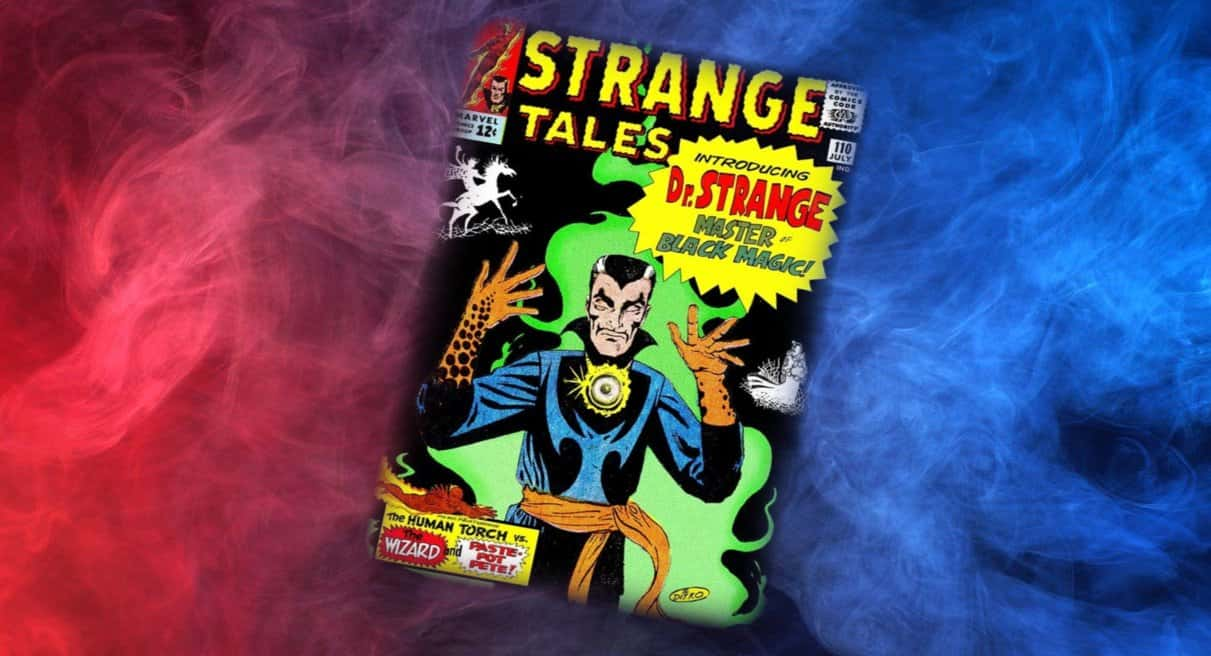
15. Thanks Dad
Prior to Doctor Strange’s comic book debut, Stan Lee didn’t exactly have great ambitions for the character. An old letter reveals what Lee thought of the character before publication: "The first story is nothing great, but perhaps we can make something of him". That they did.
16. Back in the Spotlight
While Doctor Strange made appearances in other character’s comics, he didn’t have his own solo ongoing series for nearly 20 years. From 1996-2015, the comics world was devoid of Doctor Strange as a leading man.
17. Straight Up
Although there are many ways you can describe Doctor Strange’s mythos and character, every story can be boiled down to something much simpler. Vulture has described his story as "an Orientalist fantasy about a white guy learning magic in the mysterious East…” Ya, that about sums it up.
18. Blast Off
As kids, we all saw some of our favorite superheroes go to space at some point. Doctor Strange will join this trend soon as well, with a new 2018 series. In this series, the Doctor loses his connection to Earth’s astral power and takes Tony Stark’s advice, looking to the stars for a new source of power. See Doctor Strange in space starting on June 6, 2018. Gotta say, I love the magical space helmet.

19. Sunshine
In Strange Tales #134, a fight between Doctor Strange and his nemesis Baron Mordo ends with a dramatic battle between their spirit forms... inside of the sun. That's right, they literally fought in the middle of that big ol' ball in the sky. Their fight became iconic because of Ditko's iconic art, which portrayed countless atoms swirling around the two enemies' spectral forms.
20. Hubris
Aside from their awesome facial hair, Tony Stark and Stephen Strange have drawn comparisons since they both started off as rich, selfish, egotistical (okay Stark may still be egotistical, but less so) characters who regain their humility with a trip to the East. In the case of Stephen Strange, he finds the Ancient One, while Tony Stark is captured, forcing him to question the decisions he has made until that point.
21. Bedside Manner
The Marvel films are known for their interconnected nature, but there appears to be less connection with the Netflix shows. However, there is one small connection between Doctor Strange and most of the Netflix shows. Rachel McAdams’s character, Christine Palmer, is a version of Night Nurse from the comics. Rosario Dawson's character Claire Temple from Daredevil, Luke Cage, Jennifer Jones and Defenders is another incarnation of the same character. There are several versions of Night Nurse in the comics, but all of them help out injured super heroes on the down low.
22. Silver to Big
Back in the day, Marvel was able to create some iconic superhero TV shows by leading with a CBS TV movie. The Lou Ferrigno-led Hulk series is one example of this working well. The 1978 Doctor Strange movie? Not so much. Oscar winner John Mills starred in the ill-fated show, which did poorly in ratings since its airing coincided with a Roots rerun. Critically, the movie suffered from a slow start and changes to the lore, chief among them being the addition of Arthurian lore into Strange’s story. But hey, it was worth a shot.
23. Don’t Let the Demons Bite
We’re all vulnerable when we’re sleep, but Doctor Strange might be the exception. Doctor Strange recites a specific spell that protects him while he sleeps. Like an apple, the spell is a daily requirement.
24. TMI
Strange’s access to other dimensions obviously comes with a lot of benefits, such as the ability to literally see the magical realms invisible to us mere mortals. However, Strange can also see interdimensional bacteria feasting on us. So basically, he’s the equivalent of the guy who doesn’t tell you that you have food on your face. But I guess if everyone you saw had food on their face, eventually you'd just stop letting them know.
25. Big Difference
Doctor Strange was originally named Mr. Strange, but Ditko and Lee decided that the name was too similar to Mr. Fantastic’s. Additionally, Dr. Hugo Strange was already a Batman villain. To save some trouble, the Ditko and Lee decided to spell out "doctor" to make their character name more unique.
26. The Price is Right
Doctor Strange’s physical appearance was a tribute to Vincent Price, an actor who was well known for playing mystical sorcerers. Stephen Vincent Strange also owes his middle name to Mr. Price. Now that I know that, it seems pretty obvious...
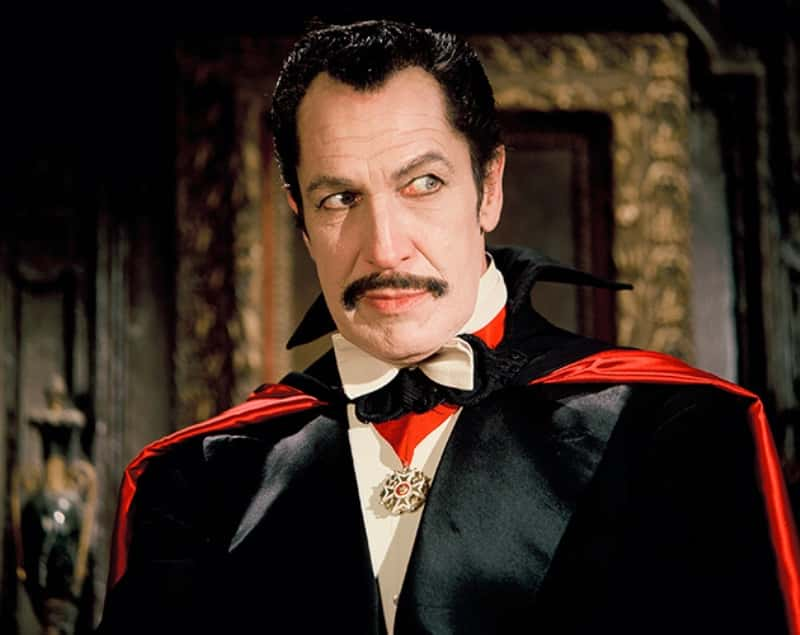 Yahoo Movies Canada
Yahoo Movies Canada
27. Passed Around
The title Sorcerer Supreme isn’t unique to Stephen Strange—it's a mantle that was previously held by his mentor, the Ancient One, and many other people before her/him. The previous holders of the title included a mermaid and the X-Man Nightcrawler’s foster mother.
28. Forbidden Fruit
Love is blind, but Doctor Strange still could have picked a better love interest. His greatest love, Clea, was his arch nemesis’s niece. In a way, Doctor Strange was the bad boy in this scenario, proving that nice guys finish last.
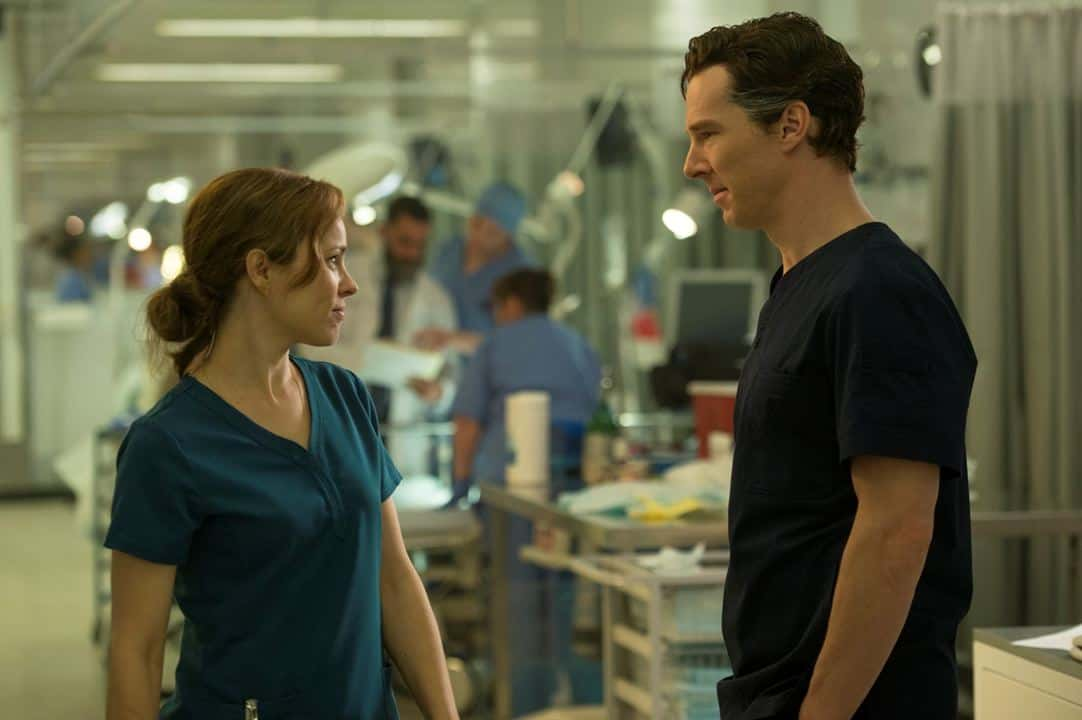 allocine
allocine
29. Compensating for Something
In the 2016 Doctor Strange comic series The Way of the Weird, Strange wielded an axe called Angarrumus to compensate for being depowered. In the storyline, Strange is stripped of his powers during an otherworldy invasion of Earth and ends up without clothes in Central Park (stay with me here...). The axe ends up being transported to Central Park as well and Strange uses it to slice through his enemies.
30. Chewing 5 Gum
So we’ve all seen commercials where a minty flavoured gum gives the user subzero breath. In the case of Doctor Strange, that’s just Tuesday. Doctor Strange’s arsenal includes a gum that freezes everything it touches once he chews it to the right consistency. Sounds more like a Bond gadget than a sorcerer's plaything, but who am I to say?
31. Lone Wolf
Some supposed loner characters, like Wolverine, end up being a part of many comic book teams. Doctor Strange, on the other hand, is more serious about flying solo (no pun intended). Strange has never been an Avengers member.
32. Mindblowing
Despite holding the title of Sorcerer Supreme and being described as one of the universe's most powerful magic users, Doctor Strange isn’t always portrayed as a highly powerful wizard. In the Ultimate comics’ Ultimatum storyline, the villain Dormammu literally makes Strange’s head explode by wrapping the sorcerer up in his cape. Yick.
33. Linchpin
Director Scott Derrickson might be tooting his own horn, but he does credit Doctor Strange with allowing Marvel to introduce the concept of a multiverse: "What we’ve wanted from the beginning was to bring in these other dimensions and realities, which is something Doctor Strange can do. Much like how the early Doctor Strange comics broke open the Marvel comic book universe into the Marvel multiverse, this film serves the same function". Sounds fun, but I can barely keep up as it is—if they start introducing alternate versions of all these heroes, I'm going to completely lose track.
34. Magic Carpet
Doctor Strange’s cape acts as a third set of hands and allows him to fly, but the comics have sometimes given it other forms that accomplish the same result. At one point, Strange had a Kimono of Levitation and then an Overcoat of Levitation. Cloak of Levitation rolls of the tongue easiest.
35. Puff Puff
In Doctor Strange: The Silver Dagger, Strange falls victim to an attack from an assassin, who traps him in a magical relic. The relic offers many experiences, including hallucinations of his fellow Marvel heroes. Even better is Strange’s meeting with a giant caterpillar puffing a hookah. Yes, really.
36. Does Whatever a Sorcerer Can
In 1965’s Spider-Man Annual #2 Spider-Man becomes trapped in another reality, which includes decorations like the limbs of people from other dimensions—festive! Doctor Strange later gets help from an astral Spider-Man to defeat the villain Xandu, helping free Spider-Man from the nightmarish netherrealm.
37. Strike!
For a character as powerful as Strange, writers can sometimes add more dramatic tension by stripping them of their powers. In 2010’s The Doctor Is Out, Strange loses his powers and then finds a magically gifted protégé, Casey Kinmont, at a baseball game. In a more goofy turn of events, it turns out his protégé’s baseball opponents are demons in disguise. Strange ends up beating the other team, with some help from his magically gifted apprentice.
38. Tragic Inspiration
Stephen Strange’s motivation to become a surgeon wasn’t simply an academic interest in medicine or the desire for money or prestige. In the comics, he had a younger sister who died when he was young. Donna was meant to appear in the film but her scenes were cut due to issues with the film’s running time.
39. Founding Partner
Netflix bingers probably already saw The Defenders, consisting of Daredevil, Luke Cage, Iron Fist and Jessica Jones. The original group in the comics was founded by Strange, the Silver Surfer, Hulk and Namor and they had the goal of protecting the Earth from other-worldly threats. Nothing against the Netflix crew, but this original group sounds a little more powerful.
40. Percocet
In Doctor Strange #177, Doctor Strange was exiled to another dimension and had to conceal his identity to be able to return to his original dimension, taking on a completely different look. The blue full face mask apparently didn’t make a big splash since this was a short-lived aesthetic, lasting only seven issues. I for one always thought it looked cool.
41. I Knew It!
Aside from hearing about it in rap songs, some people might actually hear about the Illuminati in comic books. In the Marvel comic book universe, the Illuminati are the greatest minds in the superhero community, who use their wisdom and influence to shape the world. Doctor Strange is joined at the table by Tony Stark, Charles Xavier (Professor X), Black Bolt and Namor. However, the roster does undergo changes as the comics progress, later including members such as Mr. Fantastic and Black Panther.
42. Bros
A bromance of sorts between Tony Stark and Doctor Strange has been making the rounds for years now, stemming from Invincible Iron Man #3. After much prodding, Tony Stark finally manages to get Doctor Strange to give him a high five because they are "awesome facial hair bros".
43. Praise the Lord
God can be a touchy subject sometimes, and it can be easy to forget this with the abundance of God-like figures in comic books. Marvel Premiere #14 (1974) featured sorcerer Sise-neg, or Genesis. Within the story, Sise-neg actually travels back to the moment before the Big Bang, wishing to reshape the universe in his image. Stan Lee thought the interpretation of a God-like figure would generate too much controversy. Writer Steve Englehart and artist Frank Brunner decided to get sponsorship from a Reverend Billingsley, who sent a letter to Marvel praising the story. Stan Lee then advised that the comic could stay in circulation, but that the letter needed to be print in the issue. The best part? Englehart and Brunner posed as Billingsley.
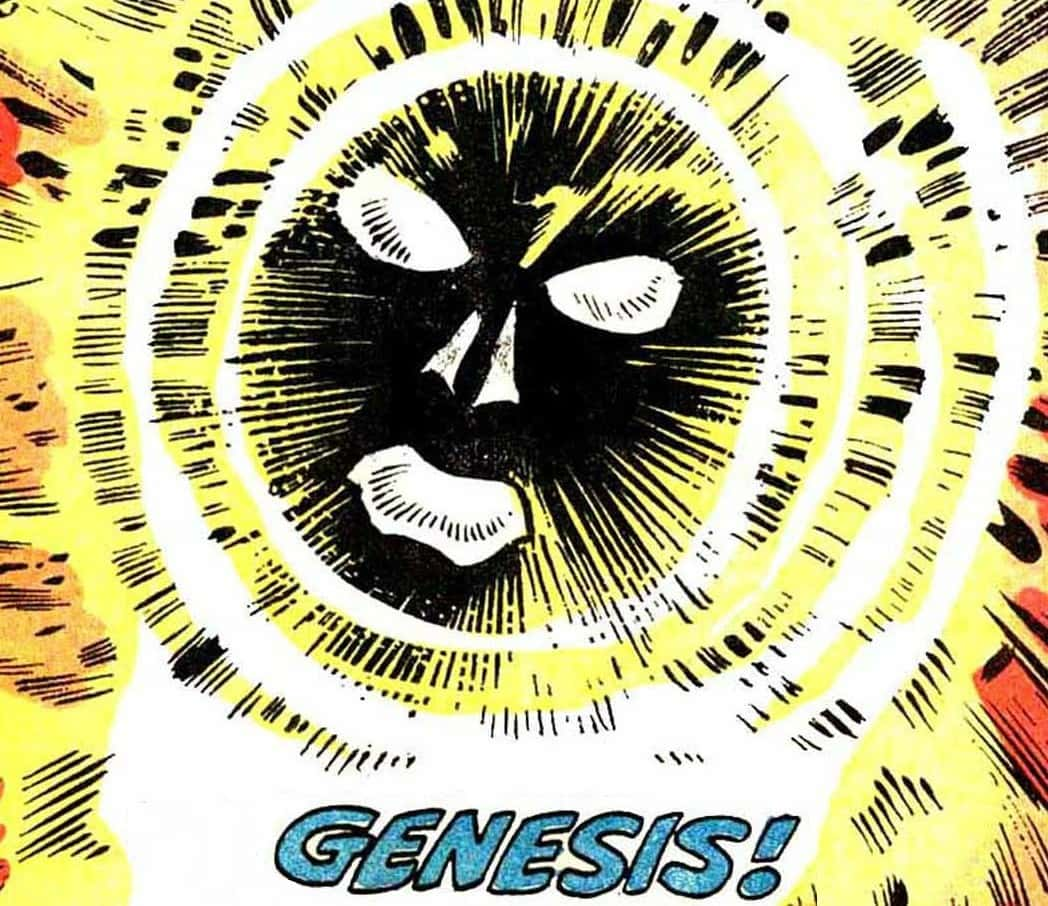 youtube
youtube
44. Electrifying
At one point, Doctor Strange and his love, Clea, travel through time and Strange ends up leaving Clea alone with Benjamin Franklin. In an unexpected twist, Franklin gets Clea intoxicated on booze before getting her into bed. This issue was later retconned to explain that Franklin was actually the villainous wizard Stygryro in disguise. Does that really make it better though?
Sources: 1, 2, 3, 4, 5, 6, 7, 8, 9, 10, 11, 12, 13, 14, 15, 16, 17, 18, 19, 20, 21

